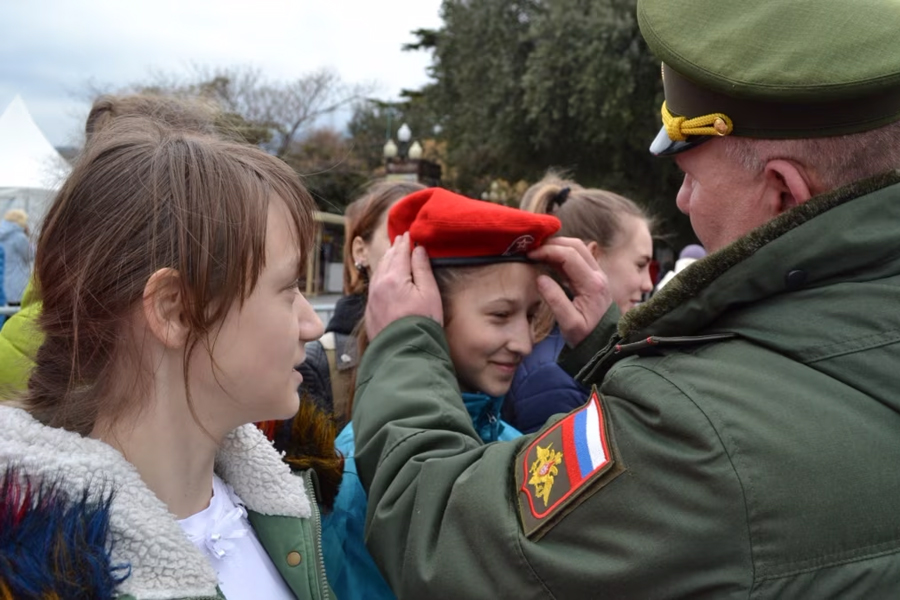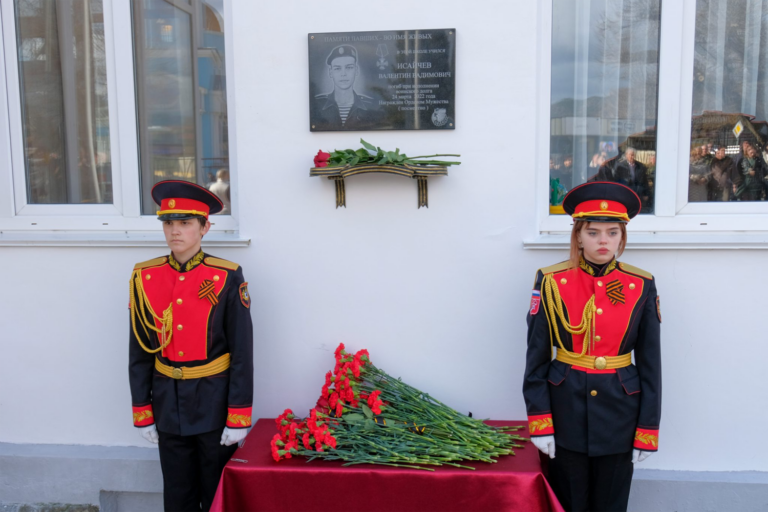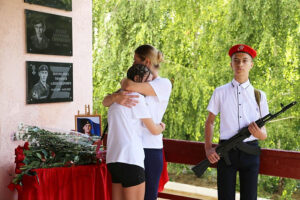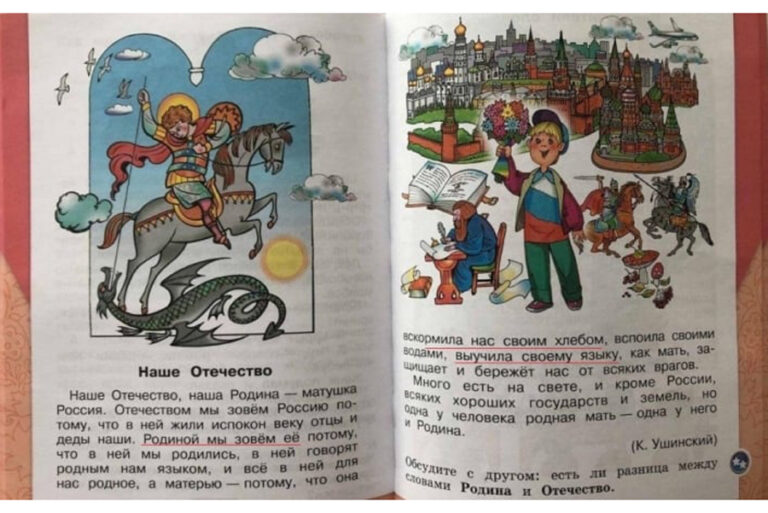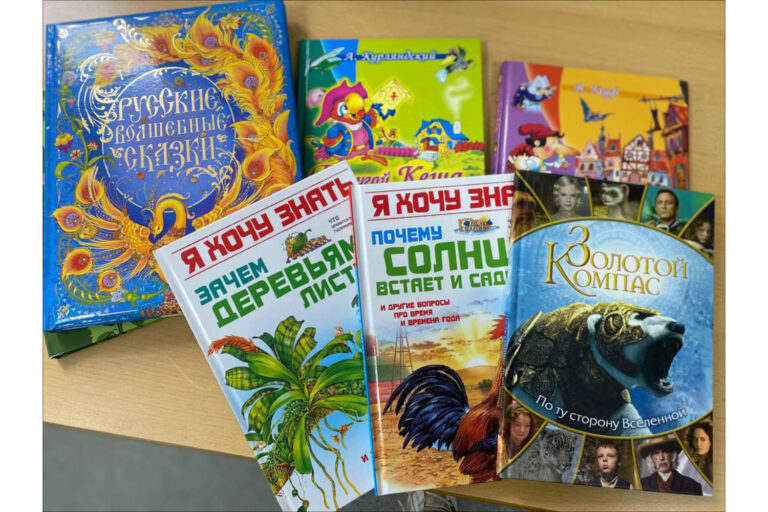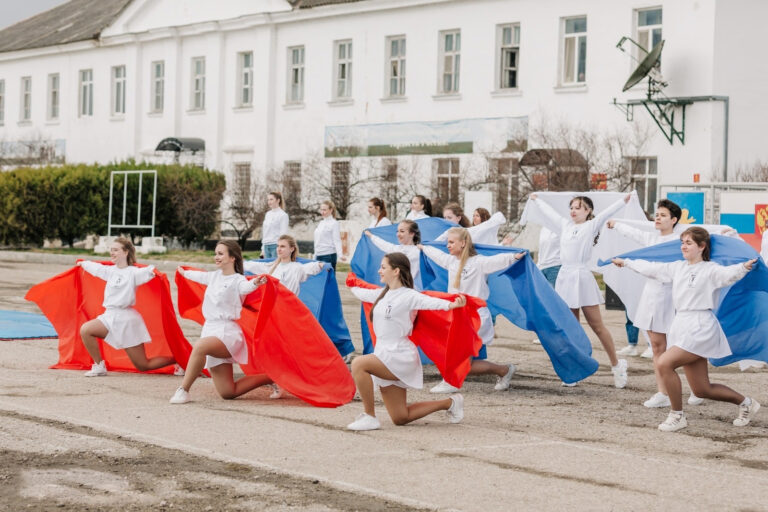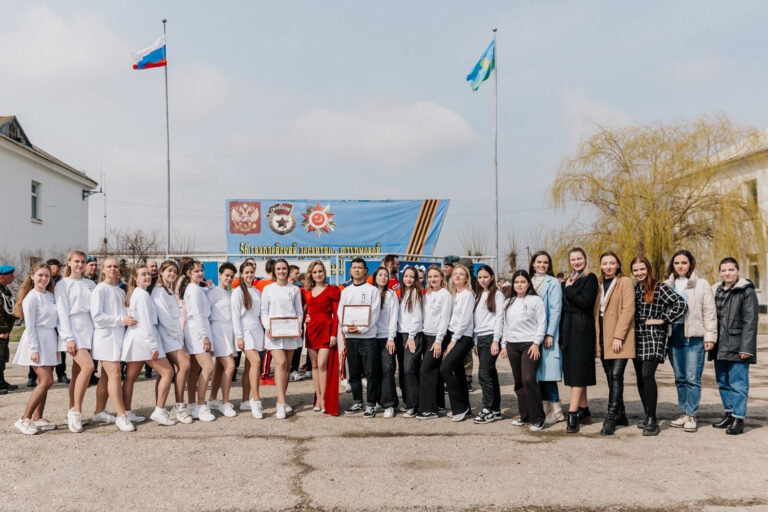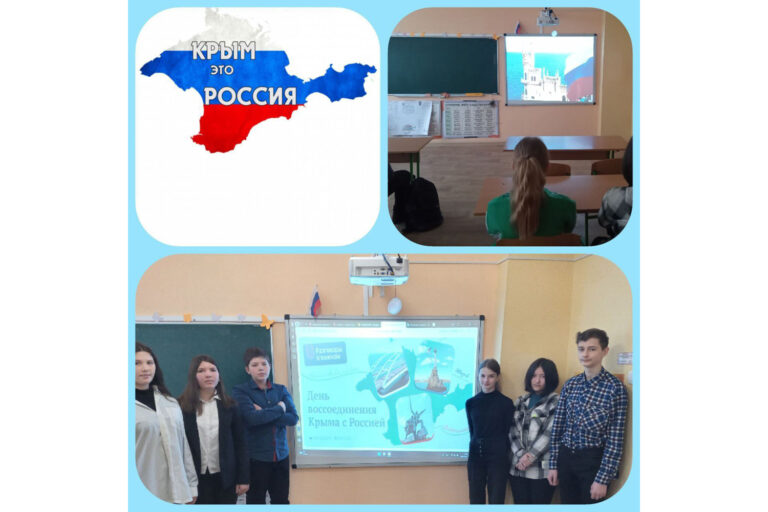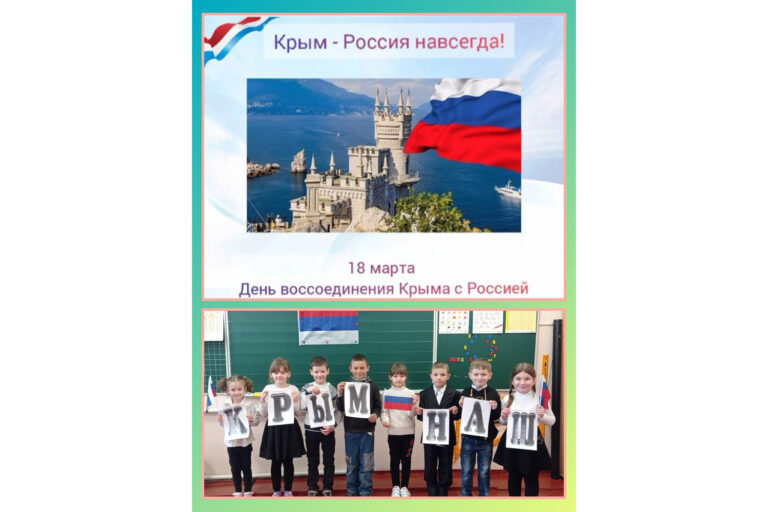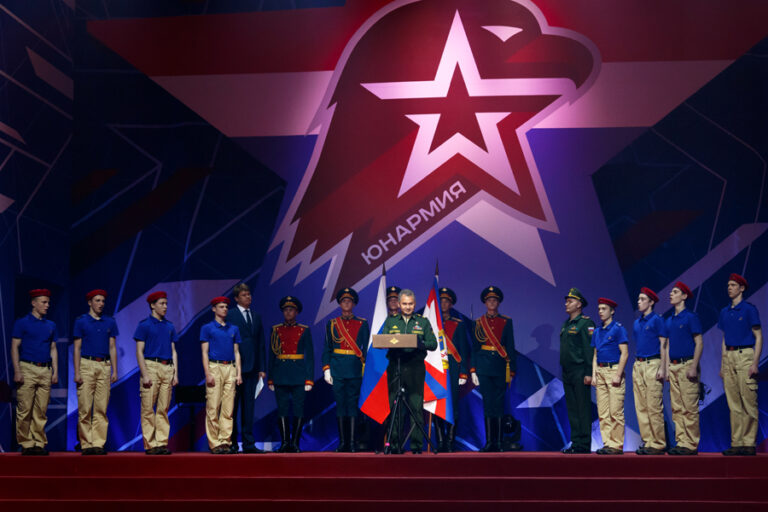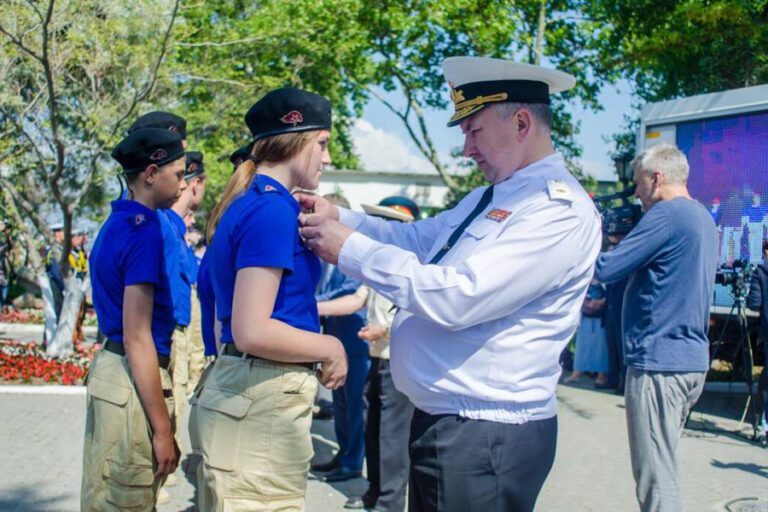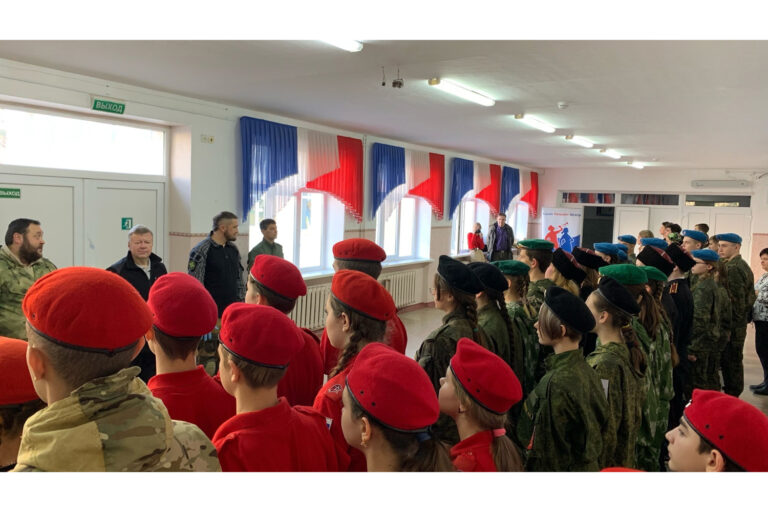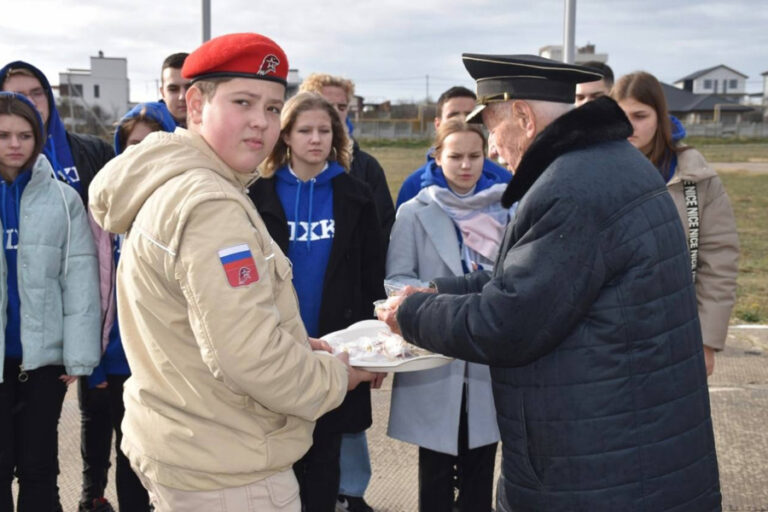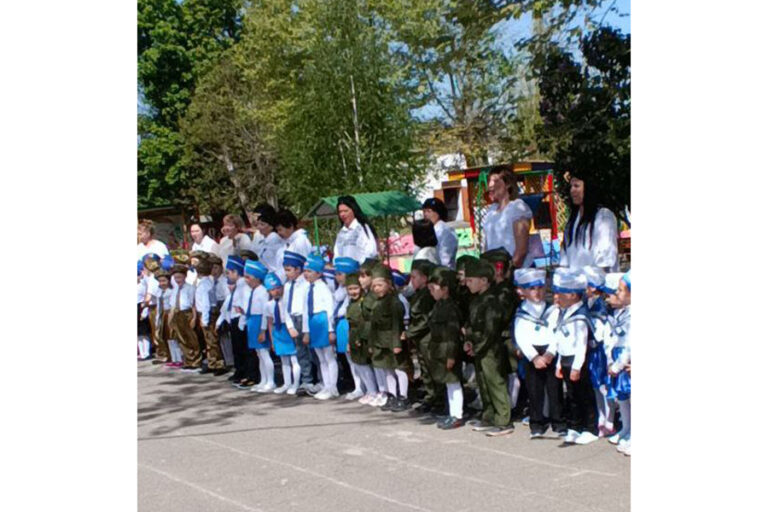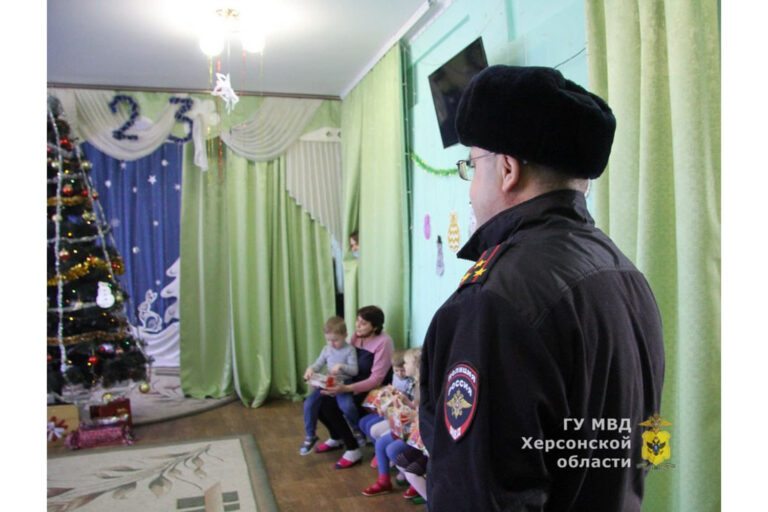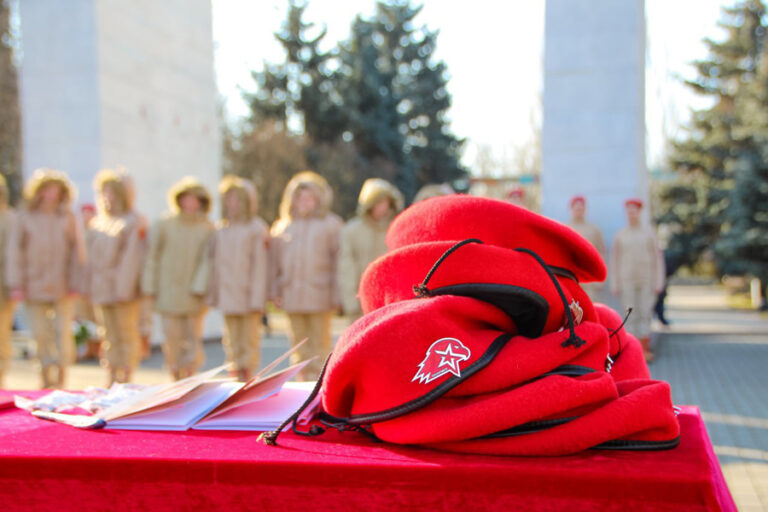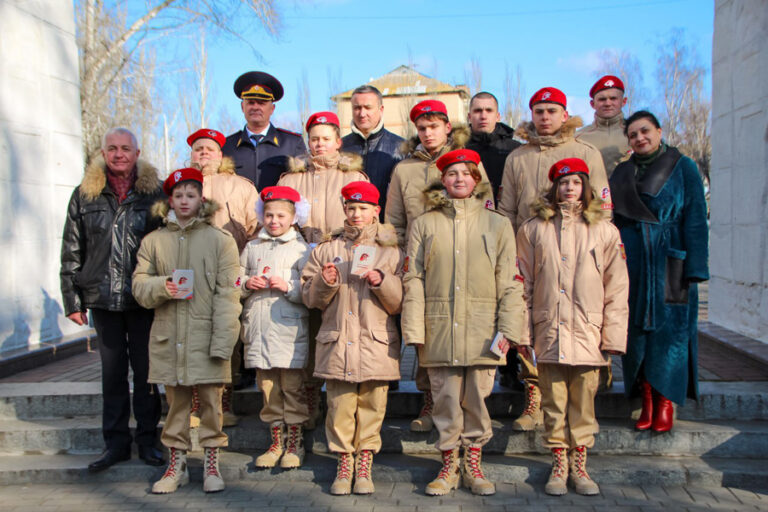How is Russia implementing cognitive occupation? What challenges will Ukraine face after the liberation of the occupied territories, and why do we need to make sure that children who had to grow up under occupation do not turn against Ukrainians in the future? In collaboration with the Almenda Centre of Civil Education, we tried to find answers to these and other questions.
*
This article contains links to Russian websites that can only be accessed through a VPN from some countriesAccording to an interim decision of the European Court of Human Rights, 27 February 2014 marks the beginning of the occupation of Crimea. Since then, the peninsula has been fully integrated into the Russian world, including its education system. From the start of his rule, Putin has used education as a tool to instil a sense of morbid patriotism among children and youth.
Currently, in Crimea, educational institutions teach exclusively in Russian. Children are taught “traditional Russian values” and are actively involved in Russian youth and children’s movements, including militant groups. Only 197 children in Crimea have the opportunity to receive full-time education in Ukrainian, and not a single school on the peninsula teaches the Ukrainian curriculum.
Following Russia’s occupation of new Ukrainian territories in 2022, Putin emphasised the importance of replacing the Ukrainian educational system with the Russian one in order to consolidate these territories within Russia and allow people to fully enjoy the benefits of their new life. Unfortunately, the aggressor country has already tested this scenario on almost 200,000 Ukrainian schoolchildren who still live in Crimea. (These estimates are approximate since there is no official data platform and Sevastopol’s statistics are usually recorded separately due to the city’s special status.)
Despite all efforts made by Ukraine and its foreign partners, Russia still has control over Crimea. As a result, the Almenda Centre has been closely monitoring the educational situation on the peninsula since 2014. Originally established in Yalta in 2011 to educate people about human rights, the organisation was forced to evacuate to Kyiv after the occupation and subsequently refocused its efforts. Today, the Almenda team documents the various crimes committed by Russia against Ukrainian children living in Crimea as well as in the occupied parts of Tavria and Pryazovia. The organisation primarily relies on open sources, such as local media and social networks, to gather information. This includes analysing the webpages of Russian-controlled organisations and institutions, as they often provide the only viable source of information about what is happening in the occupied territories.
After the Russian Federation’s full-scale invasion of Ukraine and the subsequent occupation of Ukraine’s southern territories, it became clear that the occupiers were following an algorithm developed in Crimea. Referred to as the “Crimean scenario” by the Almenda team, this method involves using education to destroy the identity of the occupied population. In this report, based on the findings of Almenda’s “Universal Soldier” monitoring project from February 2022 to July 2023, the researchers describe the powerful ideological influence of the Russian authorities on Ukrainian children living in the occupied territories. They also highlight the challenges Ukrainians will face after the liberation of these regions from the invaders.
«What is the “Crimean scenario” of destroying identity through education?
The Almenda researchers have identified three stages that characterise the “Crimean scenario” Russia has been employing since 2014: the destruction of the Ukrainian studies component in education, indoctrination, and the militarisation of children and youth. The current situation shows us that these events can happen simultaneously. However, the worst part is that the aggressor country has not stopped in Crimea — it is redefining the educational process in other occupied territories of Ukraine. Russia is deliberately removing the Ukrainian studies component from the education system in the occupied settlements, aiming to sever the people’s cultural and linguistic ties to Ukraine. This will greatly complicate the reintegration process for children born under occupation who have had no exposure to the Ukrainian language outside of their family circle, at best.
Indoctrination
The purposeful introduction of certain political ideas to form a certain social consciousness. It can occur in various spheres of life, from cultural to religious.For over a decade, Russia has been forcefully immersing Crimeans into its ideological space by destroying the invisible bridges between Ukraine and the temporarily occupied peninsula. The goals of this indoctrination are to instil loyalty to Russia, consolidate narratives that favour its ideology, and create “convenient” citizens who are unable to analyse information critically and won’t question the legitimacy of the Russian government’s actions.
Another goal is to recruit new draftees in the occupied territories, as obtaining a Russian passport, even under duress, provides a formal pretext for conscription into the Russian armed forces. According to the Prosecutor’s Office of the Autonomous Republic of Crimea, Russia has violated international law by implementing 16 conscription campaigns for young men between the ages of 18 and 30 on the peninsula between 2015 and 2023. This has resulted in more than 39,000 Crimeans being forced to serve in the Russian armed forces.
Since 2014, a “military-patriotic education” program has been implemented in Crimean schools. Its aim is to prepare students for service in the Russian armed forces. And since 2022, basic military training has become an integral part of the educational curriculum in the region. Children are being trained from an early age to serve in the Russian army, and after graduation, every able-bodied young man is required to “fulfil his duty to serve in the Russian army”. However, conscripting young Crimeans into the Russian army is considered a war crime under Article 8 of the Rome Statute of the International Criminal Court.
Therefore, indoctrination leads to the next stage — militarisation, aimed at readying a person to serve and fight in the Russian armed forces.
The war-cult propaganda shared among children and youth, especially in the temporarily occupied territories of Ukraine, aims to create a positive perception of Russia’s past, present, and future invasions. The Russians have carefully nurtured the concept of the “heroism of the liberators” for generations, which mentally justifies the war they started in Ukraine.
The three major components of the Russian Federation’s actions in Ukraine (the destruction of Ukrainian language and history, indoctrination, and militarisation) aim to eradicate the Ukrainian identity of people living in the occupied territories and force them to become “citizens” of Russia who are willing to fight against Ukraine and die for the aggressor country.
Unfortunately, this has been the fate of some young men from Crimea who were influenced by the Russian authorities and died while fighting in the war against Ukraine. The Russian Federation is now installing memorial plaques in their honour in Crimean educational institutions. Some of these men were schoolchildren when the occupation began and later served in the Russian army. These residents of the peninsula not only experienced the devastating effects of the Russian Federation’s “Crimean scenario,” but also became its victims.
slideshow
Stage 1. Destruction of the language and history of Ukraine in education
The first stage of Russia’s destruction of Ukrainian identity is the removal of Ukrainian studies from education. The aggressor country has done the following in occupied Crimea and mainland southern Ukraine:
– De facto removed the Ukrainian language and culture from public space;
– Russified the educational process by replacing Ukrainian textbooks and materials with Russian ones and banning the teaching of Ukrainian studies subjects, including the history of Ukraine, the Ukrainian language, and Ukrainian literature;
– Misrepresented the history of the Crimean Tatars and their deportation in 1944 in school textbooks, portraying them as accomplices of German troops;
– Partially replaced local teachers with Russian teachers and established efforts to ideologically “re-educate” Ukrainian educators; and
– Persecuted Ukrainian activists.
Crimea and Sevastopol. Destruction of textbooks and loss of contact with the native language
Since 1 September 2014, schools in temporarily occupied Crimea have been teaching Russian curricula. This means that Crimean schoolchildren have not been able to receive a Ukrainian education or study the Ukrainian language, literature, history, and more. According to Crimea SOS, before the Russian invasion of the peninsula, 100% of students, or 191,000 children, studied Ukrainian. However, in 2022, the occupation administration of Crimea reported that only 0.1% of students — a total of 197 children — studied it.
Ukrainian textbooks were confiscated and replaced with Russian textbooks containing the “correct” ideology as early as 2014. Eskender Bariev, a member of the Mejlis (government) of the Crimean Tatar people, reported that in a school near Simferopol, books from the Ukrainian curriculum were openly destroyed in front of students. Ukrainian books were also removed from libraries as “extremist literature”. The only Ukrainian-language media available is the Krym Sohodni magazine, which was launched in 2020 with the support of Serhiy Aksyonov, the “head of the Republic of Crimea”, and is published every three months. However, it is typically only mentioned in reports by representatives of the occupation administrations. Interestingly, Russian propagandists allegedly sent the first copy of this magazine to Ukrainian President Volodymyr Zelenskyy to demonstrate how the Ukrainian language was being developed and nurtured in occupied Crimea.
In January 2023, Russian Education Minister Sergei Kravtsov announced that history textbooks with a section on the “special military operation” would be introduced in Crimean schools that same year. However, many other books already had Russian propagandist-approved sections about the war against Ukraine. For instance, in May 2023, photos of a Grade 10-11 textbook appeared showing mentions of “Kyiv’s anti-people regime” in Ukraine and Russia’s opposition to the “collective West”. The section ended with the words, “Our mission is just! The enemy will be defeated! Victory will be ours!” (author’s translation from Russian). Another Grade 11 textbook referred to Ukraine as an “ultranationalist state” and labelled the Ukrainian armed forces as “neo-Nazis”. These textbooks, which are also intended for use in the other temporarily occupied territories and for preparations for the Russian Unified State Exam in 2024, will ask students to identify the causes of the so-called “special operation”. Each answer is absurd and reflects the “Russian world” ideology.
Ukrainian educators are also suffering under the occupation. Since 2014, Ukrainian language teachers have been forced to retrain according to Russian standards to teach Russian. Those who risked going against the system changed professions in order to not collaborate with the occupiers but still somehow earn a living.
The Russian Federation also actively encouraged its own teachers to relocate to temporarily occupied Crimea. For example, 25 teachers took part in its “Zemsky Uchitel” program in 2022.
“Zemsky Uchitel”
A Russian government program that provides extra payments to teachers who move to work in villages or towns with less than 50,000 residents.It has also become increasingly challenging to receive an education in the Crimean Tatar language. In 2023, the occupation administration of Crimea reported that only 3.2% of students (7.3 thousand) were studying in Crimean Tatar. The Russian authorities are actively discouraging the use of this language.
All of this shows that the Russian Federation is doing everything it can to ensure that residents of temporarily occupied Crimea lose their linguistic ties with Ukraine and, for those whose native language is Crimean Tatar, with that language and culture as well. Crimean Tatar is stigmatised as the “language of the enemy” by the occupation authorities, and children born during the occupation have had virtually no exposure to it in public spaces. But crucially, despite such challenges and dangers, residents of occupied Crimea continue to resist the invaders and preserve their identity.
The mainland south of Ukraine. New classics for children and kidnapping teachers
Since the beginning of the full-scale invasion, the geography of the territories occupied by Russia has expanded significantly and now includes Ukrainian lands seized in 2022.
In May 2022, newly appointed officials of the occupation administrations in eastern and southern Ukraine announced that educational institutions in those areas would be switching to Russian. They stated that Ukrainian classes would be formed upon parents’ request. However, this option is simply meant to support a propaganda narrative about the preservation of cultural rights for Ukrainians in the “liberated” territories. While it may seem like a “gesture of goodwill” on the surface, in reality, the self-proclaimed authorities are systematically pressuring and intimidating parents to sign a form refusing education in Ukrainian language and literature.
The history of Ukraine is not taught in these regions at all. Instead, it is “denazified” by removing books that contradict the Russian version of history from libraries. For example, the “Ministry of Internal Affairs of Russia in the Kherson region” bragged that books about the Holodomor of 1932-1933 and the current Russo-Ukrainian war, as well as a book by American Pulitzer Prize winner Anne Applebaum about Stalin’s repressions, were removed from the library of the village of Novotroyitske. Instead, children are given textbooks that interpret historical events in ways that are favourable to Russia. For example, they present St. Sophia of Kyiv and the Golden Gate as “the artistic heritage of Russia”, and the events on Maidan in 2014 are called a “coup d’état” sponsored by NATO countries, including the United States and EU nations.
Ukrainian textbooks and books recognized by Russian Ministry of Education “experts” as “distorting historical truth and fostering hate for Russia” are being withdrawn from public circulation. Russian books with a “politically correct” interpretation of history are imported to replace them. An analysis of textbooks brought to the occupied territories, including history, geography, and literature textbooks, confirms that Russia’s colonialist education policy is aimed at changing the minds of the residents of the occupied territories and making it difficult (or impossible) for them to mentally return to Ukrainian space.
Local libraries are not an exception. For instance, in May 2022, the central library of temporarily occupied Melitopol confiscated historical books and works of classical Ukrainian literature that were accused of “promoting nationalism”. In June, the city’s entire central library system received thousands of books from Russia, including works of classical Russian literature, historical and military books, and children’s books. In February 2023, schoolchildren in the occupied south received Russian classics, such as works by Alexander Kuprin, Marina Tsvetaeva, Anton Chekhov, Ivan Turgenev, and others, as well as children’s books. These actions were called “humanitarian missions” by the Russians, who claimed to be improving the situation for children in these territories.
The full-scale war has sparked a conversation among Ukrainians about the significance of classical Russian literature, not just for them but for the world as a whole. One conclusion drawn from this discussion is that this literature is a covert yet extremely powerful tool of soft influence that helps normalise Russia’s colonial policies and encourages a dismissive attitude towards the people it has subjugated, including Ukrainians. Children who have been brought up with such literature for years — and in Crimea, many have already graduated from primary and secondary school since 2014 — will need long-term educational work by specialists after de-occupation to calibrate their values to those of democratic countries.
In August 2023, the occupiers announced plans to import about 2 million Russian books in the upcoming school year.
slideshow
Just like in Crimea, educators in the regions of Pryazovia and mainland Tavria face “educational intimidation” as well. The Russian Federation is using various methods to force them to adopt Russian educational standards, including emotional pressure, threats, and even kidnapping those who refuse to cooperate with the occupation authorities. All of these are attempts to alter the socio-cultural space.
Parents in occupied Ukraine are also being deprived of the right to choose remote education or homeschooling for their children. The occupation government is persecuting those who do not want to send their children to Russified schools. All of these efforts, along with the constant threat to life due to active hostilities in some areas and the accompanying difficulties of a full-scale war (such as limited internet access and lack of basic necessities) are aimed at preventing Ukrainian children from receiving Ukrainian education. This way, they are gradually removed from the Ukrainian context from an early age.
Stage 2: Indoctrinating Ukrainian children the Russian way
The second component of the “Crimean scenario” is indoctrination, which allows the Russian Federation to instil favourable-to-them narratives about “traditional Russian values” in people’s minds. These values include patriotism, citizenship, service to the “Fatherland” and responsibility for its fate, the priority of the spiritual over the material, collectivism, mutual assistance, historical memory and continuity, and the unity of the peoples of Russia. When combined with isolation from the Ukrainian context, these efforts strengthen the occupiers’ desired effect of “re-educating” Ukrainians into Russians. Russia uses education, media, and mass culture in the occupied Ukrainian territories to accomplish this goal:
1. It imposes self-identification as a true citizen of the Russian Federation and aims to instil a sense of pride in belonging to the “great Fatherland” in every possible way (for example, participation in mass events glorifying Russia and trips to historical sites, including locations tied to the Soviet Army’s “military glory” during the “Great Patriotic War”).
2. It involves students in Russian youth movements that promote “traditional Russian values” while militarising them (“Eagles of the Russian Federation”, “Movement of the First”, “Victory Volunteers”, etc.).
3. It distorts perception of Ukraine, positioning it in history textbooks as a fascist and neo-Nazi state.
4. It portrays the collective West (EU countries, the United States, etc.) as enemies and unfriendly states.
Crimea and Sevastopol. Propaganda legends and flash mobs
In 2014, the occupation government of Crimea approved the “Concept of Patriotic, Spiritual and Moral Education in the Republic of Crimea”. After analysing this document, Almenda researchers concluded that the peninsula’s formal and non-formal education systems aim to form a Russian identity among children as well as promote the idea that participation in the wars waged by the Russian Federation is “a sacred duty of every Russian citizen”. However, this was only the beginning.
At the end of May 2015, the occupation authorities in Crimea started implementing the “Strategy for the Development of Education in the Russian Federation until 2025”, which describes how to form a Russian identity. In short, this happens by introducing military and patriotic training into the educational process.
In 2022, the occupiers approved a local law called “On the Patriotic Education of Russian Citizens in Crimea”. It finally “legalised” and systematised most of the Russian Federation’s illegal practices against the residents of the occupied peninsula. It also significantly expanded the circle of those who are subject to such patriotic education, adding educational and religious institutions.
Russia begins the forced formation of Russian identity from a very young age, when children are not yet able to critically analyse information, including the influences they are exposed to. This policy starts in preschools, where they create a reality full of Russian narratives, including state symbols and photos of Putin. Russia is doing this both in its own federation and in the occupied territories of Ukraine. Children are also involved in various pro-Russian events, such as pro-government flash mobs. It is clear that this ideological foundation laid in childhood will be very difficult to change in adulthood, and this is obviously what Russia is banking on.
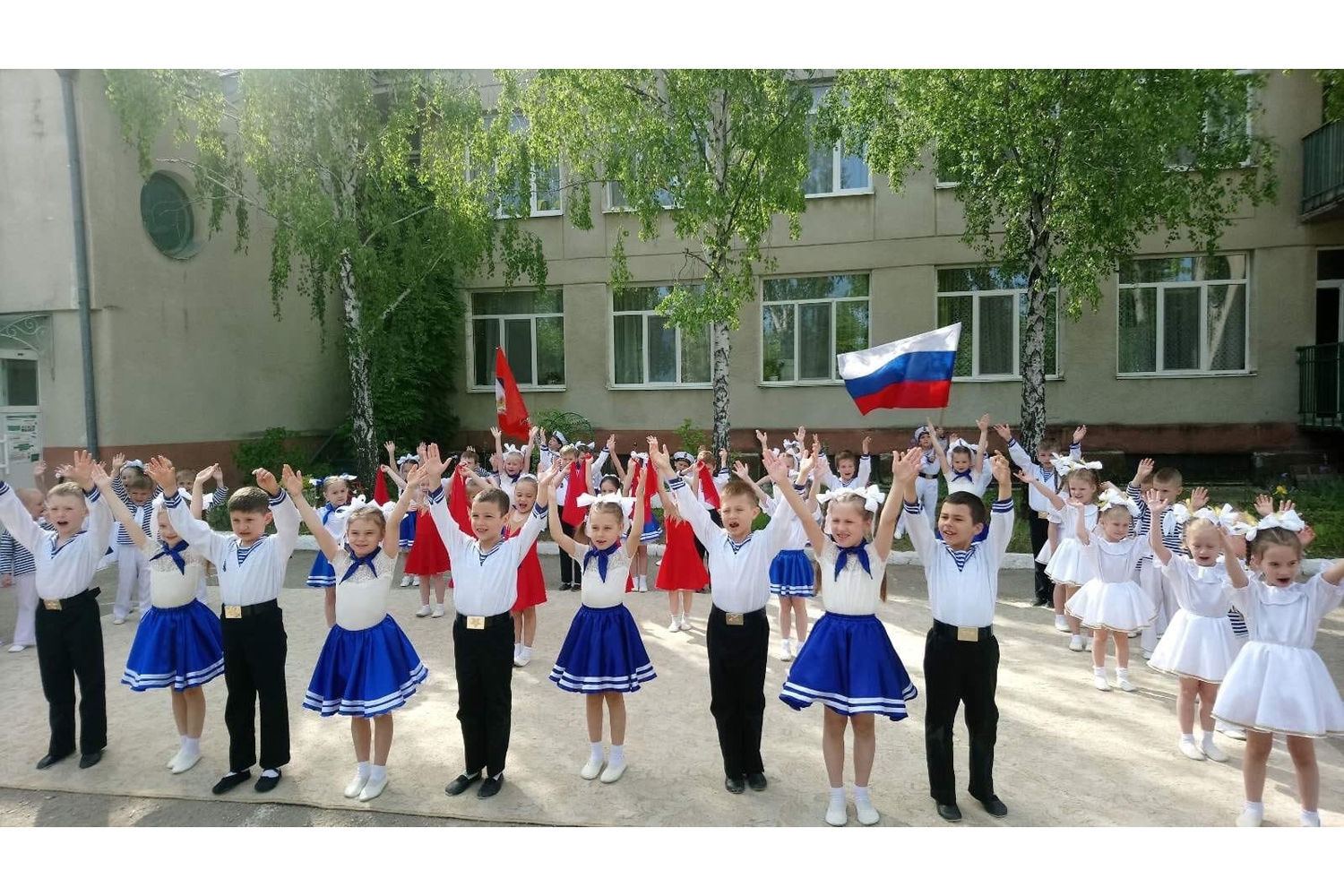
A kindergarten competition for the best flash mob, called “Together we are a great power, together we are the country of Russia”. Sevastopol, 3-9 June 2022. Photo: Russian propaganda media.
All Russified Ukrainian schools actively use Russian symbols, raise the Russian flag every week, and sing the Russian national anthem. This was all approved by the Russian Ministry of Education.
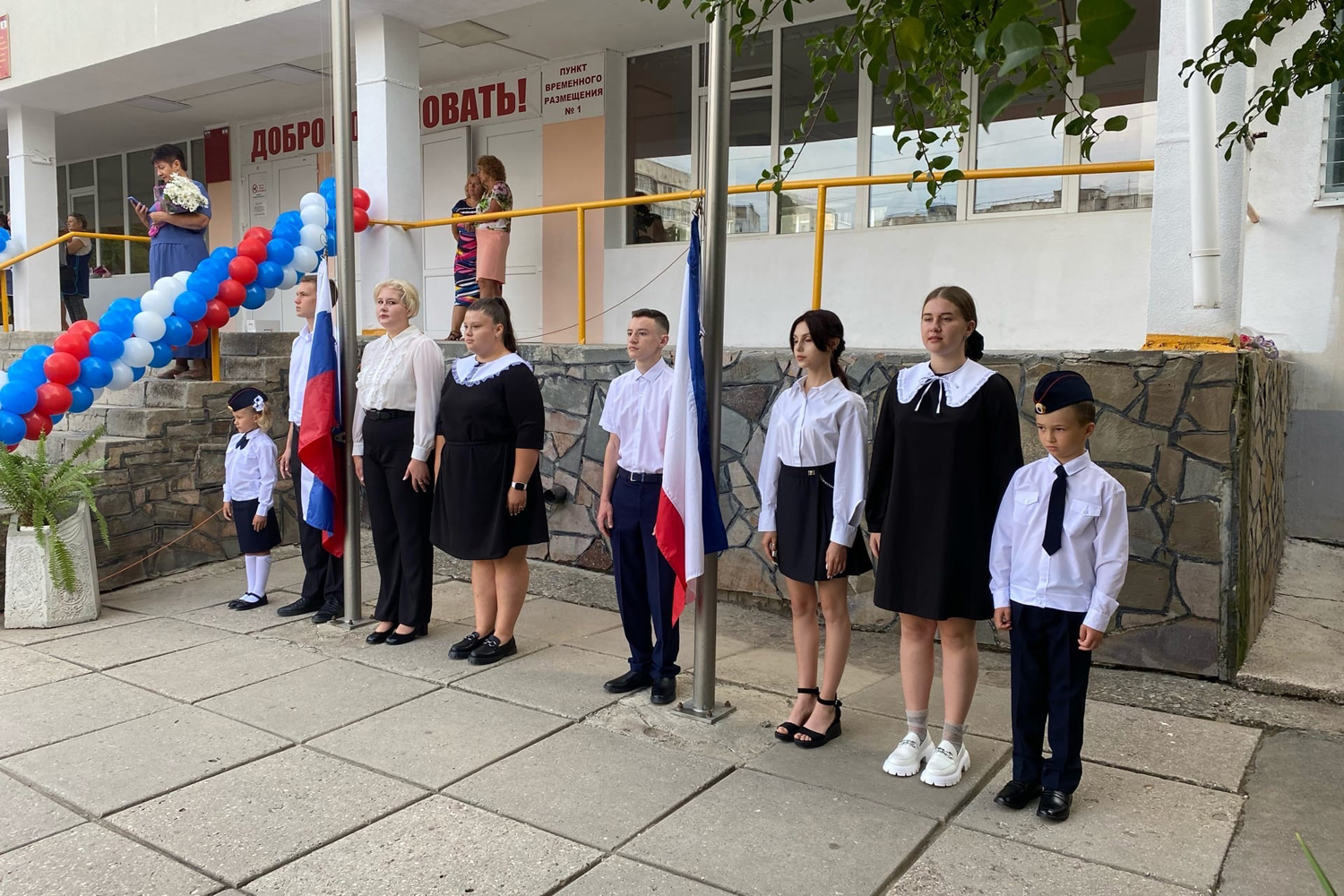
Raising the Russian flag in a school in Crimea. Tavria, 2022. Photo: Russian propaganda media.
To raise Ukrainian children to be patriots of the Russian Federation, general secondary education institutions hold weekly lessons called “Conversations about Important Things”. In 2022, all schools in the temporarily occupied territories, including Crimea, held a lesson titled “Our Country is Russia” to foster a sense of civic identity and pride for Russia. Ukrainian children also listened to the following lessons during the 2022-2023 school year: “Russia — World Leader in the Nuclear Industry”, “National Unity Day”, “Heroes of the Fatherland Day”, “Constitution Day”, “Volunteers of Russia”, “Movement of the First” (about a youth organisation created by Putin), “Traditional Russian Values”, “Russia in the World”, “Russian Science Day”, “Day of Reunification of Crimea with Russia”, “Day of Remembrance of the Genocide of the Soviet People by the Nazis and Their Allies”, “Victory Day: The Immortal Regiment”, and so on. Even the names of these lessons suggest that Russia is not just trying to educate young Ukrainians, it’s trying to implant a sense of hostility towards Ukraine and anything related to it. The methods used are even more disturbing: they involve distorting historical facts; manipulating information about the current situation in Ukraine, Russia, and the world; and essentially brainwashing children into preparing for a war with Ukraine and the West.
Attendance at these lessons is mandatory, and their content and materials are prescribed by the Russian authorities. The lessons clearly aim to instil a love for the Russian Federation and promote a positive attitude towards the Russo-Ukrainian war. They also encourage a willingness to further serve Russia, particularly in the Russian army or security forces.
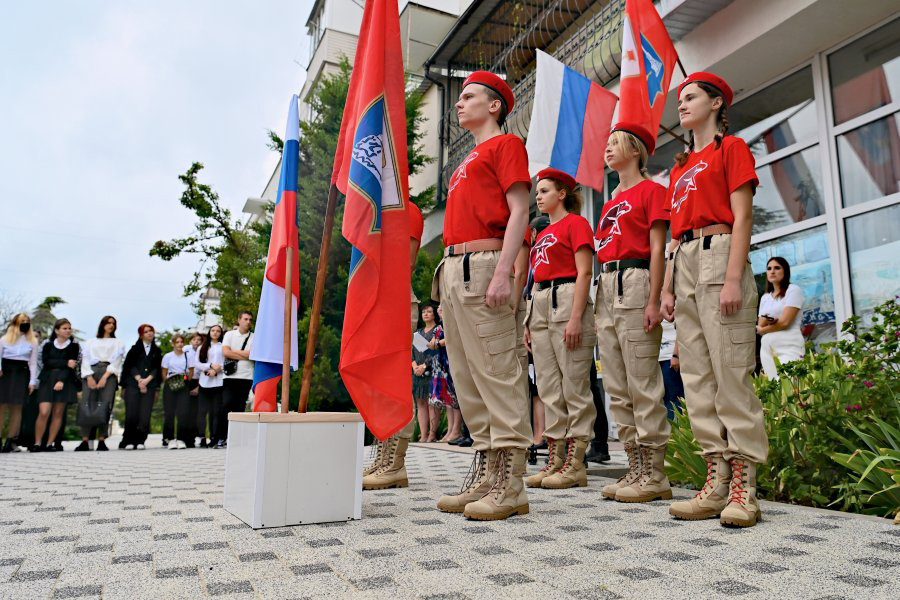
An “Our country is Russia” lesson. Crimea, September 2022. Photo: Russian propaganda media.
Indoctrination also takes place through informal activities: the Russian authorities organise numerous patriotic contests, competitions, and events that aim to teach children to love and be proud of Russia.
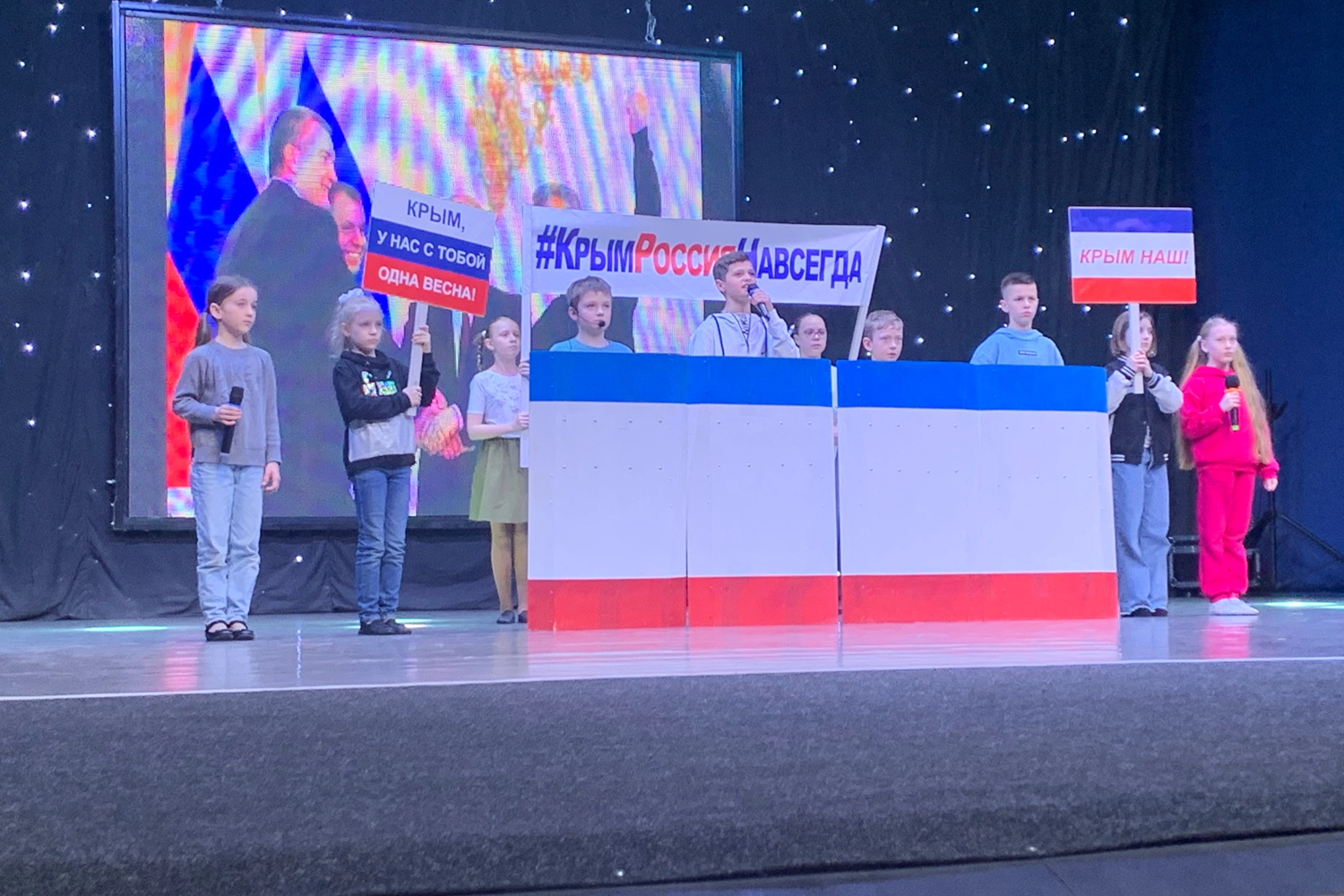
“We are the descendants of victory!” contest. Crimea, April 2023. Photo: Russian propaganda media.
In order to shape the identity of a typical representative of the “Russian world”, Russia places great emphasis on children’s and youth movements. These include the All-Russian Military Patriotic Social Movement “Yunarmiya” (“Youth Army”, which has a mostly military profile and unites between 1.3 to 2 million participants), “Big Change” (which has more than 5 million participants as of August 2023), “Movement of the First” (which was created in 2022 and has more than 3 million participants as of November 2023, including 300,000 mentors, with plans to involve all 18 million Russian children within 3-5 years), and “Eagles of Russia” (which has more than 57,000 team members as of the end of 2022).
It appears that the Russian government is reviving the tradition of Soviet pioneering. This is a perfectly thought-out system where every child in a movement regularly receives a dose of propaganda.
Young Pioneers of the Soviet Union
A movement of children’s communist organisations in the Soviet Union that aimed to instil loyalty to the Communist Party among middle school students (Grades 5-9).The Eagles of Russia program is the first stage of the “Russian Movement of Children and Youth”, accepting children aged 7 to 10. What the program organisers innocently call “the development of social activity” is actually gradual and long-term indoctrination. Initiation into the “Eagles” is actively taking place in occupied Crimea.
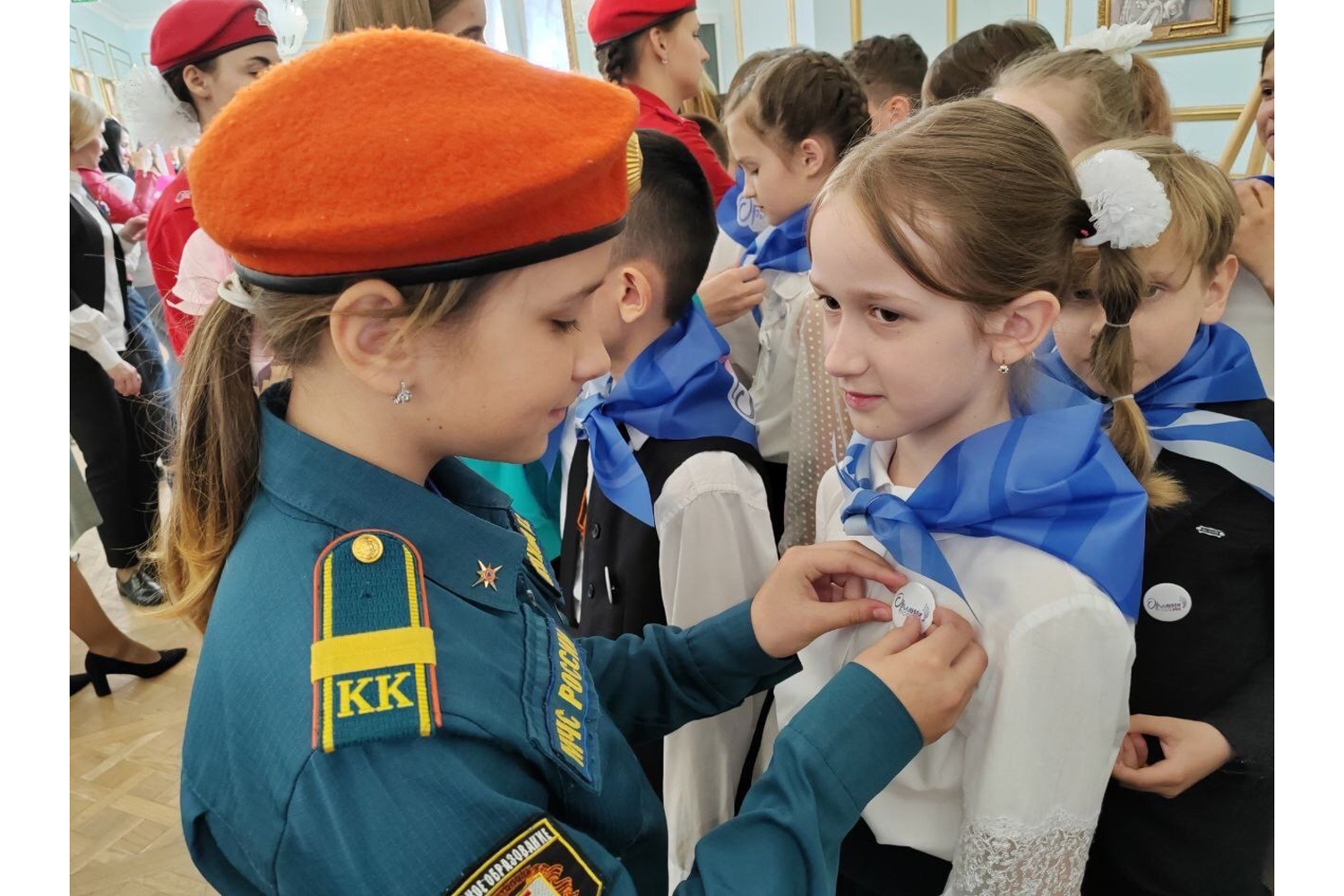
Initiation to the Eagles. Sevastopol, May 2023. Photo: Russian propaganda media.
The Movement of the First was established in Moscow in December 2022 as the largest and most ambitious children’s organisation. Its aim is to reach every child in Russia and other “native Russian” (in other words, occupied) territories, where it can exert ideological influence.
According to a propagandistic legend, the movement was initiated by Diana Krasovskaya, a student of the Sevastopol Engineering School. In April 2022, she asked the President of the Russian Federation to establish an organisation that would bring together all children in Russia.
The first branch of the Movement of the First was created by Russian Education Minister Sergei Kravtsov in Henichesk during the organisation’s founding congress. In January 2023, Russians began to actively create branches in educational institutions in temporarily occupied Crimea.
Currently, the Movement of the First has an ambitious goal: to unite all children’s and youth movements under its auspices, involving as many children as possible. To do this, the movement has its own TV channel, specialised programs in recreation camps, and grants to support projects selected by members. All of these incentives are aimed at attracting 18 million children in Russia and the occupied territories to the movement.
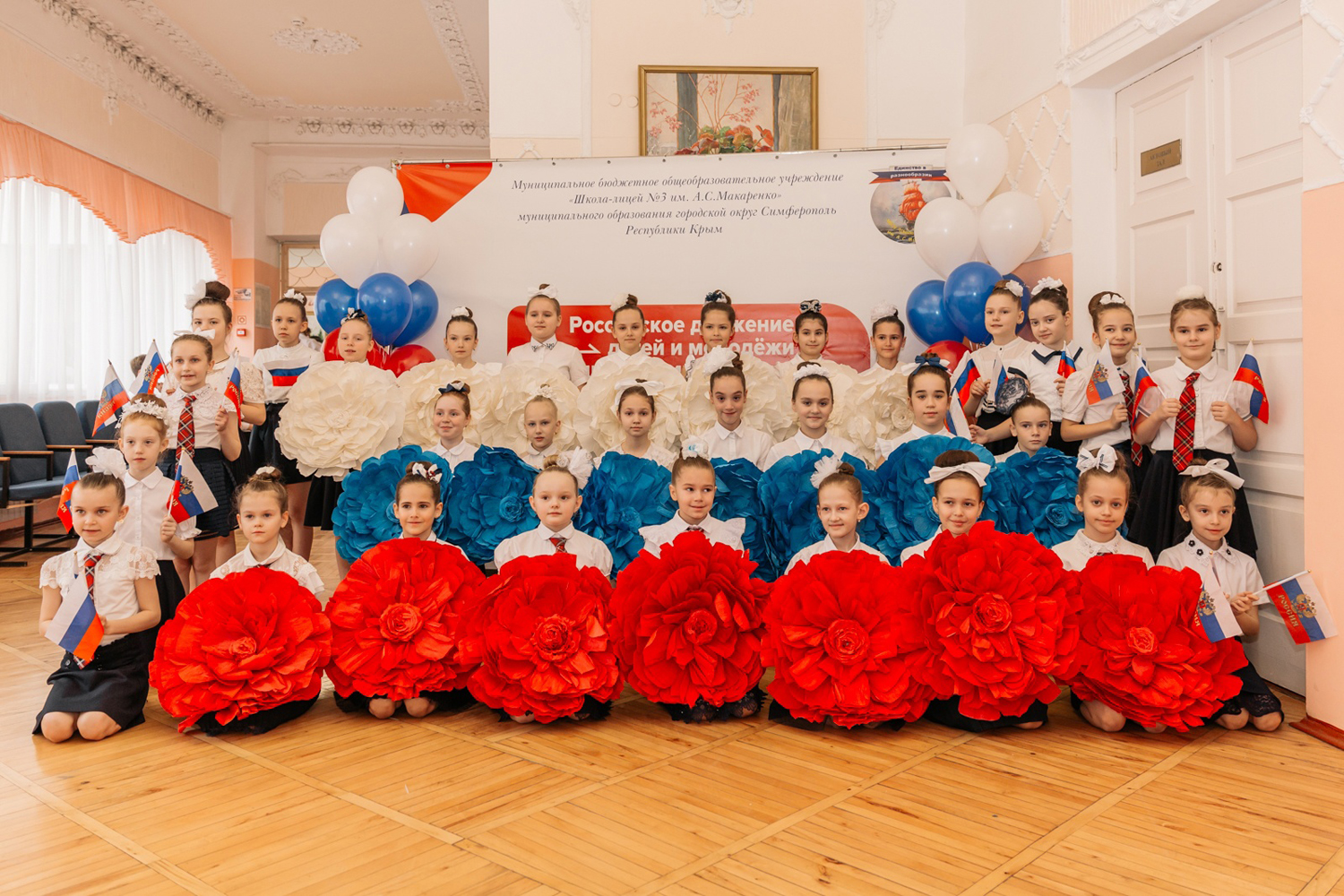
Opening of a Movement of the First branch at the Makarenko School-Lyceum No. 3, where students of the Crimean Federal University became mentors for children for the first time. Simferopol, February 2023. Photo: Russian propaganda media.
Universities also host propaganda events. For example, in March 2022, students of the Crimean Federal University took part in a concert for the military personnel of the 56th Guards Air Assault Regiment of the Russian Federation.
KFU
The so-called Crimean Federal University was established in 2014 on the premises of the Vernadsky Taurida National University (founded in 1918) in Simferopol. In 2016, the Vernadsky Taurida National University relocated to Kyiv and resumed its work there.slideshow
All these measures aim to ensure that Ukrainian children either forget their Ukrainian identity or do not have the time to develop it properly. Also, according to the leaders of the Russian Federation, being a good citizen of the Federation means not only supporting the government and its actions unequivocally but also being prepared for “true service to the Fatherland”, which involves serving in the army. To achieve this goal, there is an active push towards militarisation.
What does this mean for Ukraine now, after more than two years of full-scale war? Firstly, Russia is investing heavily in raising a new generation of individuals who are willing to fight against Ukraine. This is because the Russo-Ukrainian war is not just a struggle for territory, but for existence. Secondly, after the de-occupation of southern settlements, Ukrainian society will need to be prepared to face distrust or even resistance from the local youth. Years of the influence of propaganda cannot be ignored and may lead to various adverse outcomes.
The mainland south of Ukraine. “YugMolodoy” and the deportation of children
In Tavria and Pryazovia, similarly to what happened in the Autonomous Republic of Crimea and Sevastopol, the Russian occupation administrations have been actively reforming educational processes. They have introduced their symbols into schools, such as flags, posters with the Russian coat of arms, the text of the Russian anthem, portraits of Putin, and Russian cultural and artistic figures. Themed events were organised for Russian Flag Day (August 22) during the school holidays in Melitopol and Henichesk, and the 2022-2023 school year opened with “Day of Knowledge” celebrations where the Russian flag was raised. The Day of Knowledge is a relic from the Soviet Union, of which modern Russia became the legal successor.
Unfortunately, preschoolers in Tavria and Pryazovia are also unable to avoid the influence of the occupiers. On 9 June 2023, a kindergarten in the village of Botievo, located 50 kilometres from Melitopol, organised events to celebrate Russia Day. During one celebration, children dressed as birch trees, nesting dolls, and bears and danced with their teachers. They also listened to the Russian national anthem. These activities aim to normalise Russian symbols and involve children in the Russian cultural space from a very young age.
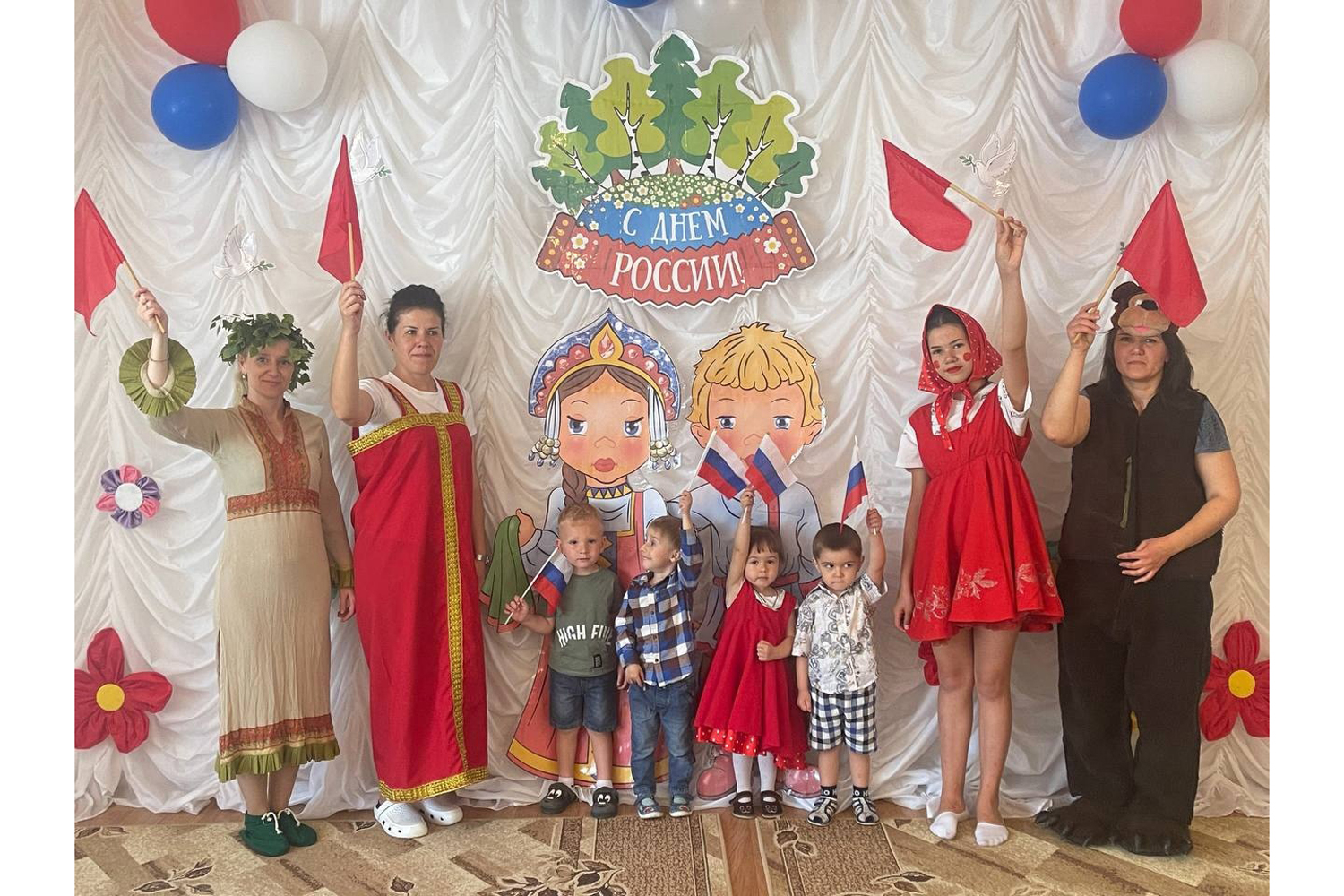
A Pro-Russian celebration in a kindergarten in the village of Botievo. 9 June 2023. Photo: Russian propaganda media.
The aforementioned weekly “Conversations about Important Things” aimed at immersing schoolchildren in “traditional Russian values” are also held in the newly occupied territories. For example, on 20 March 2023, a lesson on “The Day of Reunification of Crimea with Russia” was held at the Primorska School in Skadovsk, where Russian propaganda narratives were broadcast to children.
slideshow
Pro-Russian children’s and youth movements are also active in these regions. The occupiers are opening branches of the all-Russian Movement of the First as well as local organisations such as “YugMolodoy”, led by local collaborator Yuliia Klymenko. Ukrainian children are also recruited to other Russian initiatives and groups like #wearetogether (a project that supports families of Russian military personnel), “Volunteers of Victory”, the “Russian Youth Union”, the “Young Guard of United Russia”, “Do It!”, “The All-Russian Student Rescue Corps”, “Volunteer Medics”, KVN Union (a heavily censored comedy competition), and others.
Members of these organisations actively spread Russian propaganda among children and youth. This approach is perhaps the most effective method of indoctrination, as it is carried out by peers or people of similar age.
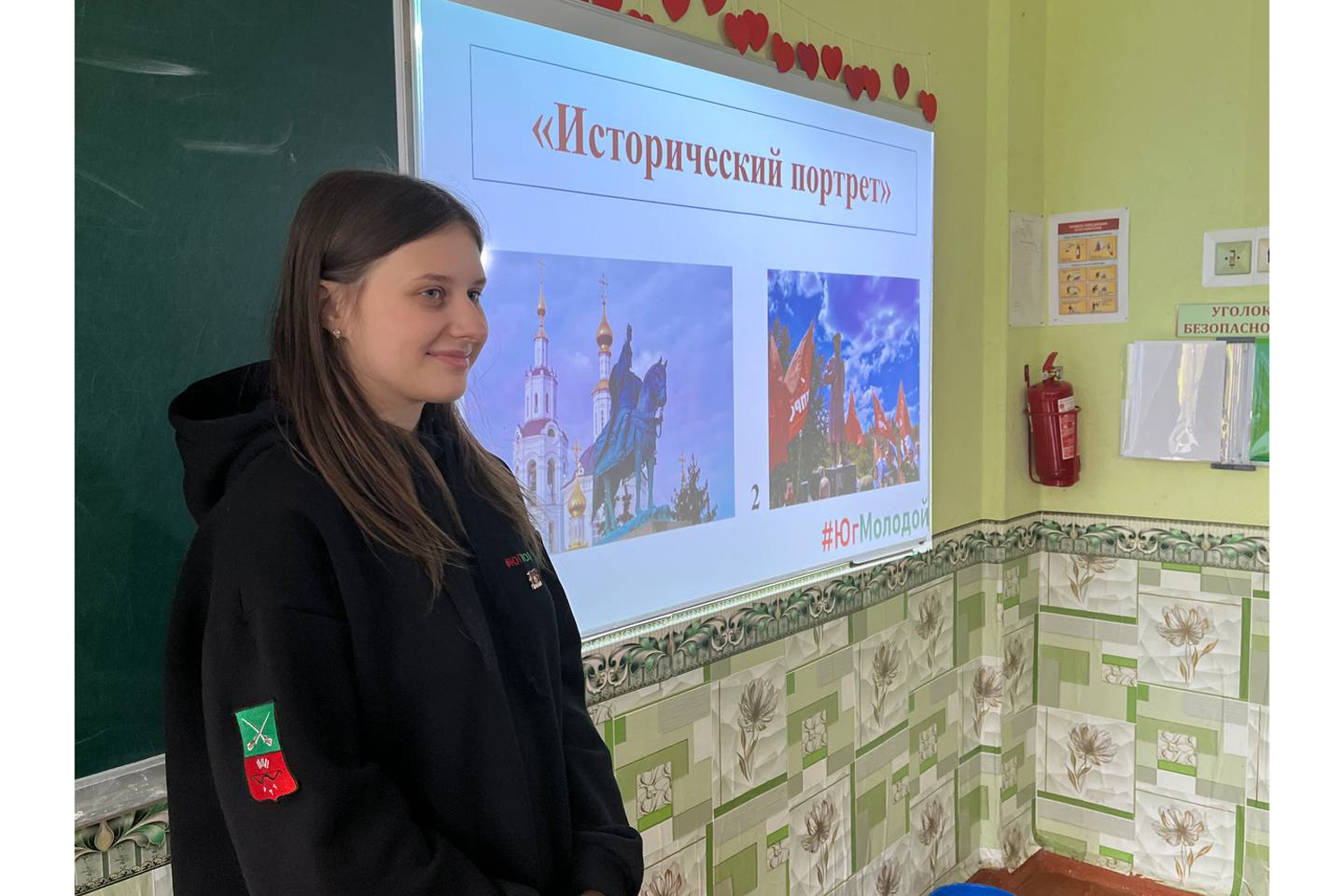
Yuliia Klymenko of the #YugMolodoy youth movement conducts a quiz for students titled “Russia is my Motherland” at school No. 1 for 11th graders. Melitopol, March 2023. Photo: Russian propaganda media.
Another tactic used by Russians to replace the identity of people in the occupied territories of Ukraine is the organisation of “recreational activities” for children in Crimea and the Russian Federation. Under the guise of leisure, Ukrainian children are forcibly displaced, and these children’s camps are used as platforms for their “re-education”. Russian Federation and occupation administration officials have repeatedly claimed that such trips include an extensive “cultural educational program” as well as other educational classes (including optional ones) that follow Russian programs.
The Humanitarian Research Lab at Yale University reports that 78% of the so-called recreation camps are being used for the political re-education of Ukrainian children and the imposition of Russian ideology. Representatives from Russian children’s and youth movements, including the Yunarmiya, the “Russian Schoolchildren’s Movement”, and the Movement of the First, were also invited to participate to help encourage young people to join these organisations. This appears to be another calculated strategy: if children are skeptical of what the adults tell them, they may be more likely to consider the views of their peers, even those from other countries.
What’s more, parents have repeatedly reported that Russian occupation representatives are openly preventing young people from returning from these “vacations”. The Humanitarian Research Lab at Yale University found that Russian officials at all levels of the federal and regional governments, as well as civil servants of local occupation administrations, are involved in the forced displacement of Ukrainian children.
Stage 3. Militarisation of children, the Yunarmiya, and paramilitary classes
According to Almenda, the third stage of the “Crimean scenario” involves militarisation. Russian authorities view war propaganda as a key tool for influencing and maintaining their positions. Here’s how they are militarising the field of education in the temporarily occupied territories of Ukraine:
– Involving veterans of the Russo-Ukrainian war in the patriotic education of children;
– Organising actions in support of the Russian military, such as writing letters to soldiers, collecting aid for the front in educational institutions, etc.;
– Opening specialised paramilitary classes (cadet and Cossack* classes);
– Promoting education in military educational institutions, including the Suvorov Military School and the Nakhimov Naval School;
– Involving children in the military-patriotic Yunarmiya organisation for Russian youth as well as in military-patriotic camps, games, and competitions; and
– Introducing mandatory military training in secondary and higher education institutions for all students.
*
This refers to the Don Cossacks, considered by Russians to be a sub-ethnicity of Russia. Representatives of the Don Cossacks have lived in the modern territory of Pryazovia, the eastern regions of Ukraine, and the Volgograd region of the Russian Federation since the 16th century.Crimea and Sevastopol. Oaths, “lessons of courage”, and preschoolers in military uniforms
Children living under Russian occupation in the Autonomous Republic of Crimea and Sevastopol often participate in events celebrating the “Days of Military Honour of Russia”. These events involve children dressing in military uniforms and using the St. George’s ribbon, which is banned in Ukraine and several EU countries. Veterans of the so-called special military operation also participate in the celebrations.
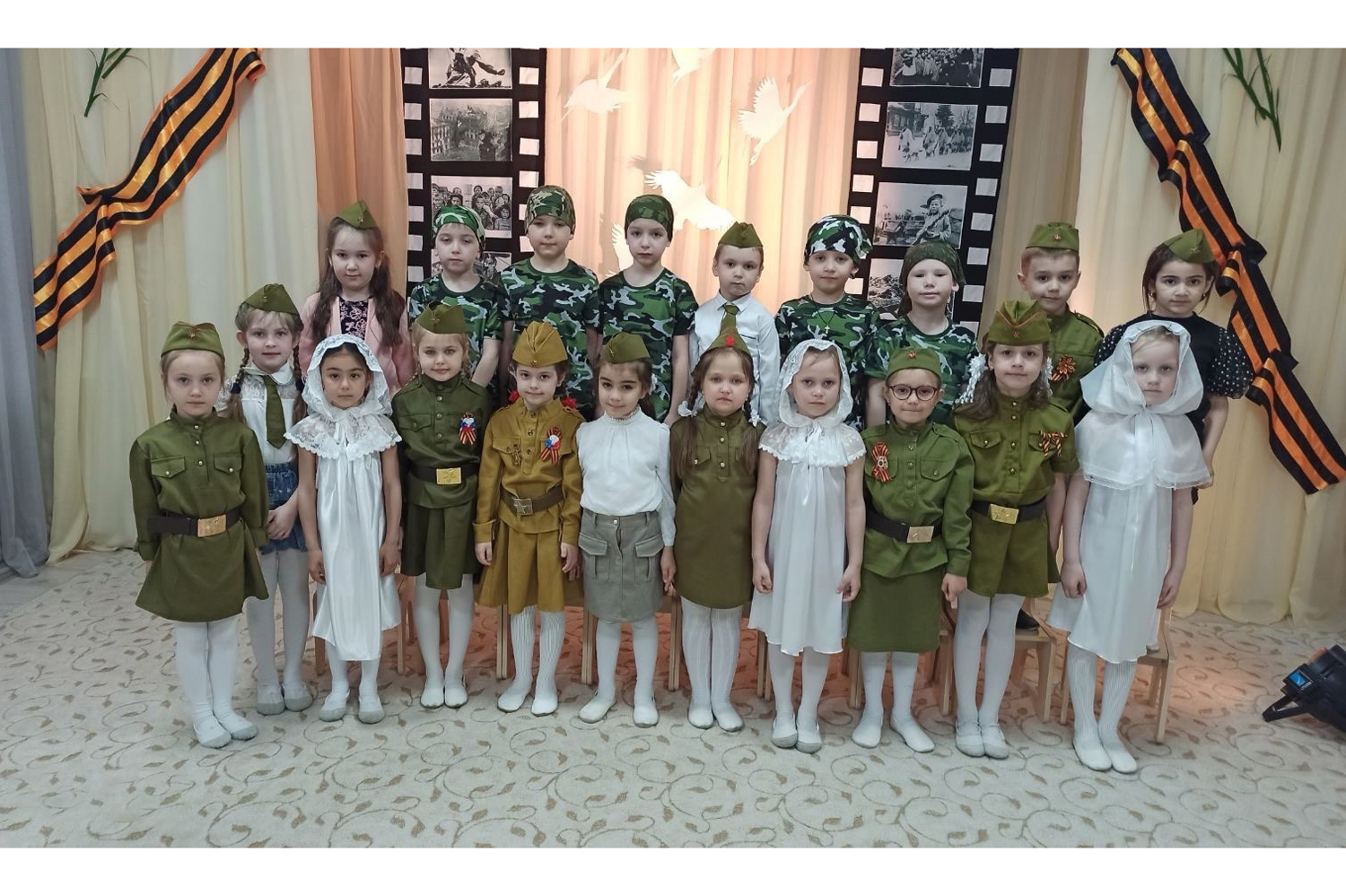
Celebrating the 78th anniversary of Victory Day in the “Ruchiek” kindergarten. Nizhnohirsk, 9 May 2023. Photo: Russian propaganda media.
The Yunarmiya, which plays a major role in these activities, has been integrated into the curricula of Crimean educational institutions since 1 September 2016. However, members in Crimea were admitted as early as the end of May 2016 — two months before the organisation’s official registration on the peninsula at the end of July. A teleconference was organised with Moscow for the official initiation, and children aged 8 to 18 gave an oath of allegiance to Sergei Shoigu, Minister of Defense of the Russian Federation.
slideshow
The Russian Federation establishes units of the youth movement at formerly Ukrainian, but now Russified, schools. In these units, children are taught to handle weapons and participate in military-patriotic activities such as “memory watches” at sites of Soviet Union and Russian “military glory”, unveilings of memorial plaques in honour of Russian soldiers killed during the Russo-Ukrainian war, and the “Zarnitsa” game.
Zarnitsa
A game that simulates combat operations. Participants are divided into two teams, and the goal is to capture the opposing team’s flag, which is located on the “base”. Players have to get to the flag and “kill” opponents. Each player has shoulder straps; if they are torn off, the player “dies”.The Yunarmiya also has a mentorship program that allows it to involve children under state care. While other children’s parents can still refuse their child’s participation in the organisation, orphans don’t have this option. The plan is to have every tenth schoolchild in Crimea in the Yunarmiya by the end of 2024.
slideshow
In occupied Crimea, education is further militarised through programs such as “cadet and Cossack education”, which are introduced in first grade. These programs are launched or supported by various institutions, including the Russian Ministry of Defense, the Ministry of Emergency Situations, the police, the Federal Security Service (FSB), and the Investigative Committee.
In March 2023, an all-around military and sports competition for cadets called “Raising Patriots” was held in occupied Simferopol. The event was organised with the support of law enforcement agencies and a Cossack school. During the competition, students demonstrated essential skills for serving in the Russian army: drill training, marching with drums, weapons techniques, assembling and disassembling assault rifles, and first aid. They also participated in relay races and sports tests to showcase their endurance, strength, and speed.
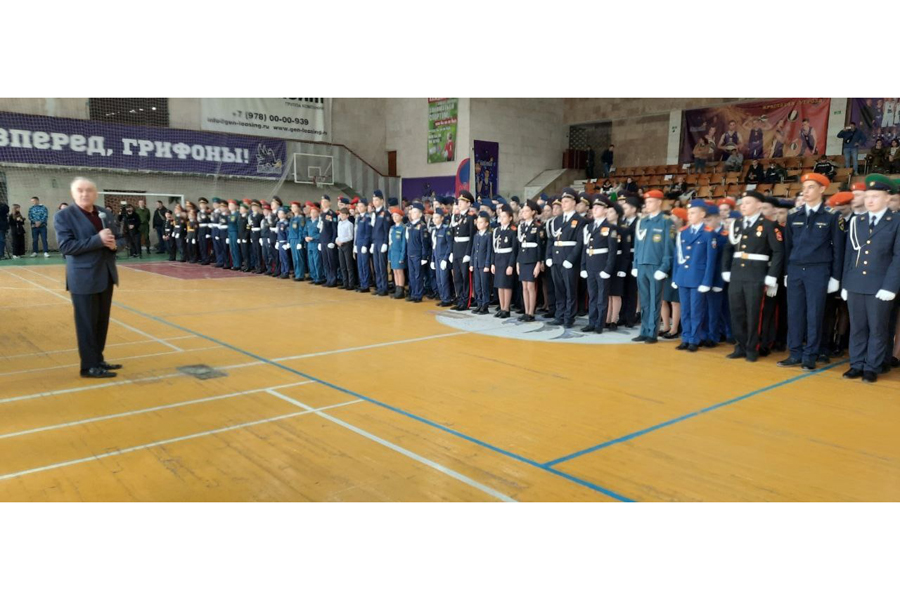
The “Raising Patriots” competition. Simferopol, March 2023. Photo: Russian propaganda media.
Educational institutions in occupied Crimea frequently host meetings for schoolchildren featuring participants in the Russo-Ukrainian war, particularly during “lessons of courage”. For instance, Renat Kovalevsky, a Russian soldier from Sevastopol, spoke at an assembly at School No. 43 after receiving a letter from a student as part of a campaign to write to the Russian army.
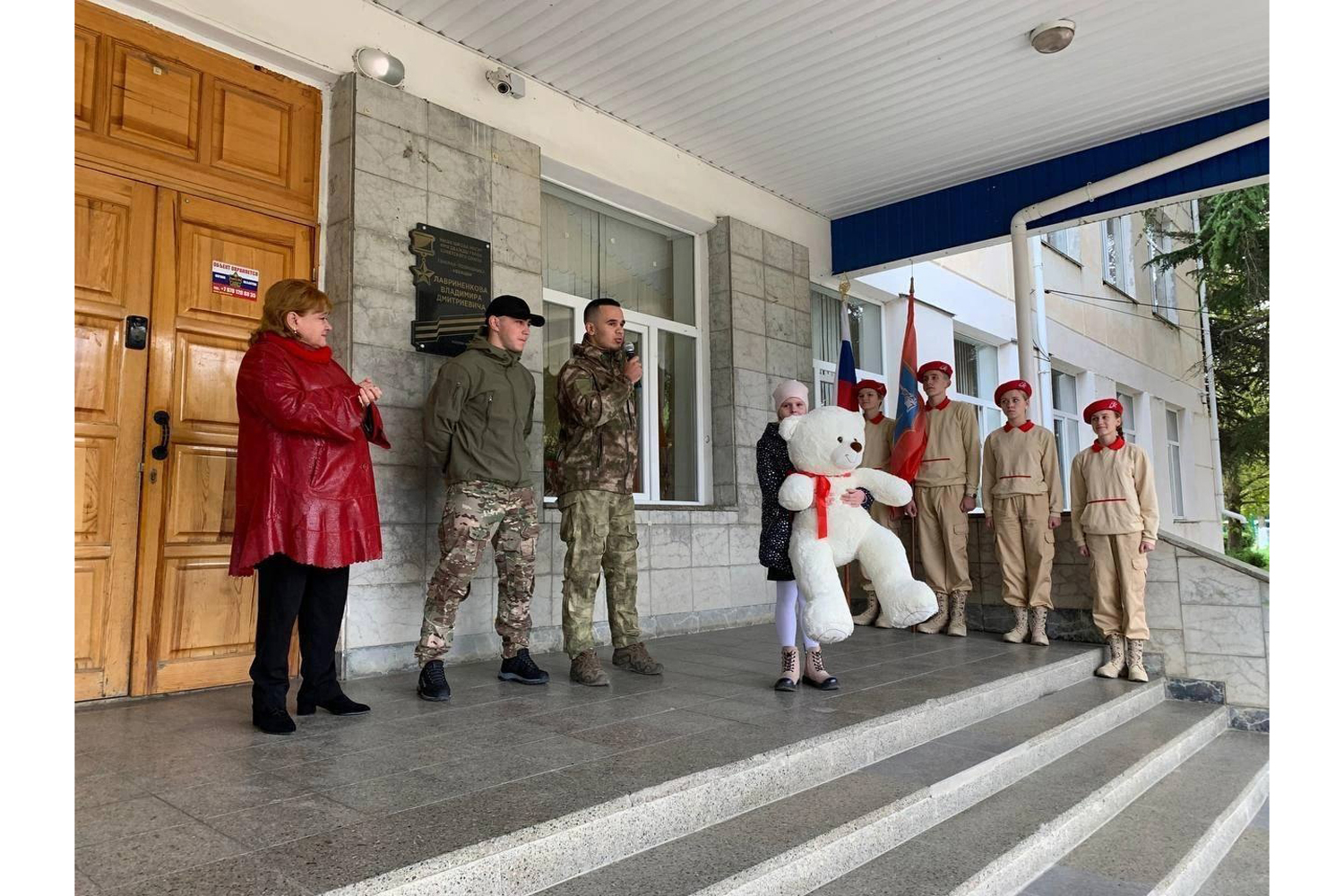
A participant in the Russo-Ukrainian war speaks at a lineup at school No. 43. Sevastopol, October 2022. Photo: Russian propaganda media.
Additionally, on 10 November 2022, Serhiy Aksyonov ordered compulsory military training for schoolchildren on the peninsula. His initiative included setting up special training centres, training teachers in the discipline, and conducting regular military-patriotic work with young people, including events for “Conscript Days”. It also organises spring and summer training camps where students are organised into “military units” and receive instruction in firearms, drill, tactical training, and physical fitness. Such changes have already taken place in Crimean youth camps and are led by various patriotic organisations.
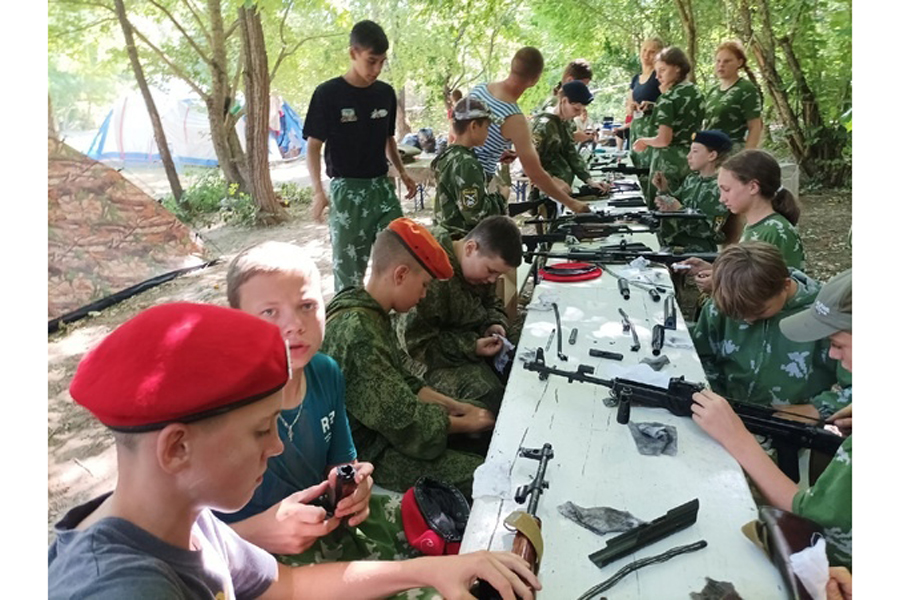
“Yunarmiya Breakthrough” training and field exercises. Aromatne village, August 2022. Photo: Russian propaganda media.
Since the start of the Russian Federation’s full-scale invasion of Ukraine, children in Crimea have been actively involved in supporting the war, in particular by participating in pro-government initiatives to support the Russian army. For example, children take part in campaigns to collect humanitarian aid, patriotic sing-alongs, flash mobs, the “Letter to a Soldier” writing campaign, and more.
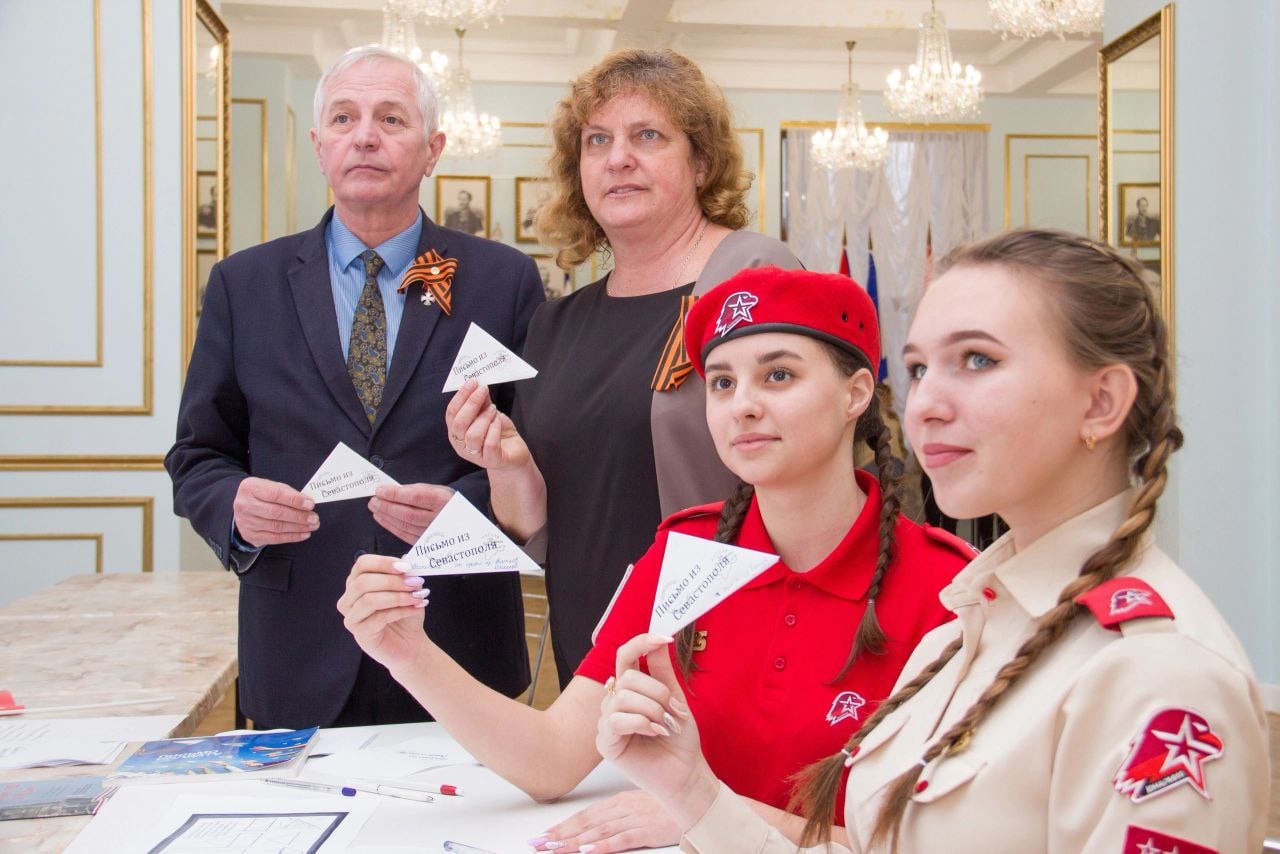
“Letter to a Soldier” campaign. Sevastopol, 2023. Photo: Russian propaganda media.
The militarisation of youth continues even after graduation. For instance, the Crimean Federal University organises a number of propaganda events, including military-related ones. In February 2023, a participant in the war against Ukraine met with students of Sevastopol State University and called on students to support the Russian army, noting that the so-called special operation had significantly “rallied and consolidated [Russian] society, especially the youth”.
Sevastopol State University
Sevastopol National Technical University was founded in 1963 and existed until 2014. After the occupation of Crimea, it merged with 7 other universities on the peninsula and became Sevastopol State University.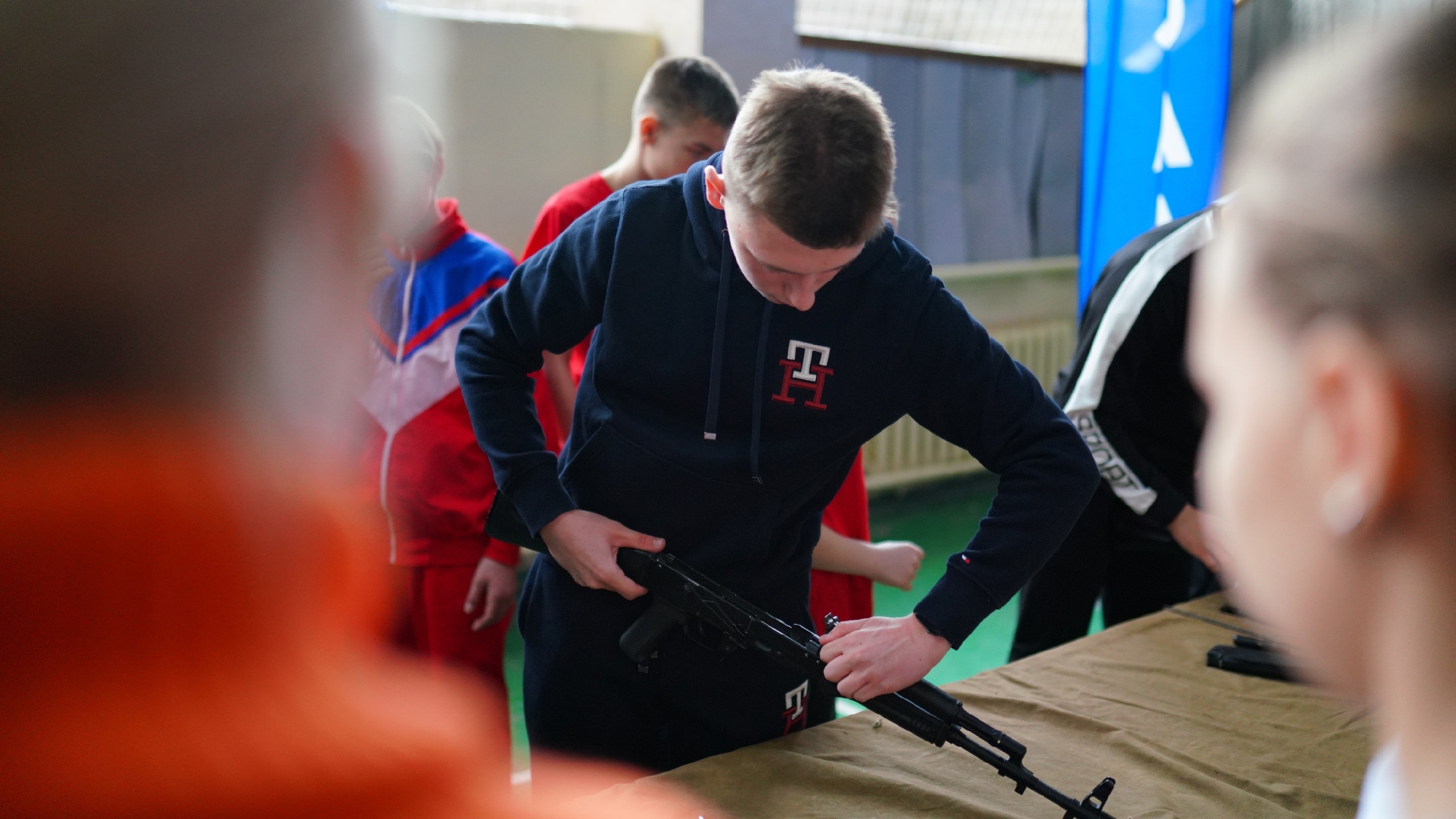
The regional stage of the “Raising Patriots” competition for cadet and Cossack classes at the Vernadsky University Medical Academy. Crimea, March 2023. Photo: Russian propaganda media.
As we can see, the Russian government’s understanding of Russian identity implies a willingness to defend Russia with arms in hand — and not just to join the army, but to obey and execute orders, whatever they may be. This fits into our understanding of the concept of the “little man”, an image inherent in Russian culture. Here is what Polish-American scientist Emma Thompson said about this concept:
“The ‘little man’ is the hero of many famous works of Russian literature, a figure who is absolutely helpless and incapable of anything. But when you look at the history of different countries, you can see that freedom and liberty were achieved solely through the sacrifice of the average person. Instead of sitting and crying, they went to fight for freedom.”
This “little man” may not make decisions on his own, but thousands of such individuals collectively form an army ready to attack another state. The occupying administrations’ policies create a foundation for further recruitment of Ukrainian citizens into the Russian armed forces, instilling a necessity to serve Russia and a willingness to sacrifice oneself for a hostile state from a young age. International humanitarian law prohibits an occupying power from forcing residents of the occupied territories to pledge allegiance to it and serve in its armed forces. It also prohibits promoting voluntary enlistment. These actions may be subject to consideration by the International Criminal Court as war crimes committed by the occupation administration of Crimea since 2014.
War propaganda has been used to justify the occupation of Crimea since 2014, and the war extended to full-scale armed aggression on mainland Ukraine in 2022. If Crimea is not liberated from the invaders in the near future, it’s likely that Crimean schoolchildren will end up serving in the Russian army and being sent to war, risking their lives. For instance, 24-year-old Dmytro Kotov, who studied at Dzhankoy School No. 6, was a member of the Yunarmiya and died in the Russo-Ukrainian war.
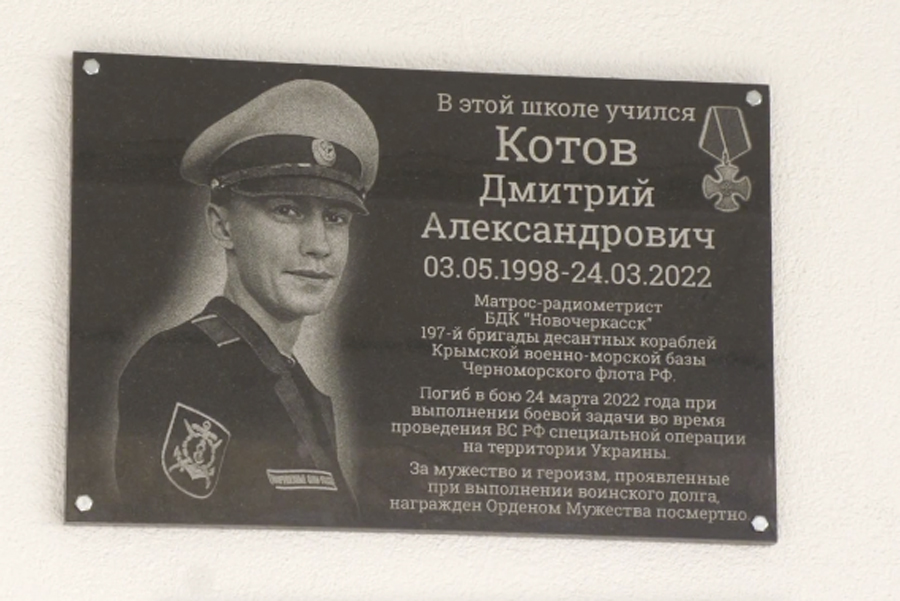
A memorial plaque. Photo: Russian propaganda media.
The mainland south of Ukraine. Meeting with “heroes” and cadet classes
Children in occupied areas of the mainland south of Ukraine are also exposed to a culture of war from a young age. Similarly to other occupied regions, representatives of Russian security forces are welcomed into kindergartens, where children are dressed in Russian camouflage for various celebrations.
*
At the time of publication, part of the mainland south of Ukraine, namely parts of Tavria and Pryazovia, is still occupied, and the processes of destroying Ukrainian identity and militarising youth are only gaining momentum.slideshow
On the eve of “Unity Day”, a Russian national holiday, in November 2022, regional branches of the Yunarmiya were established in the occupied areas of Donetsk, Slobozhanshchyna, and Pryazovia (such as in Henichesk and Melitopol). Children are being actively recruited into the organisation, and grandiose initiation ceremonies are being conducted with the participation of local propagandists.
slideshow
While the Yunarmiya consists of children aged 8 to 18, their patriotic education is overseen by adults who arrange military activities for them. Representatives from various occupation ministries, including the Ministry of Youth Policy and Sports of the Kherson region, also participate in these activities.
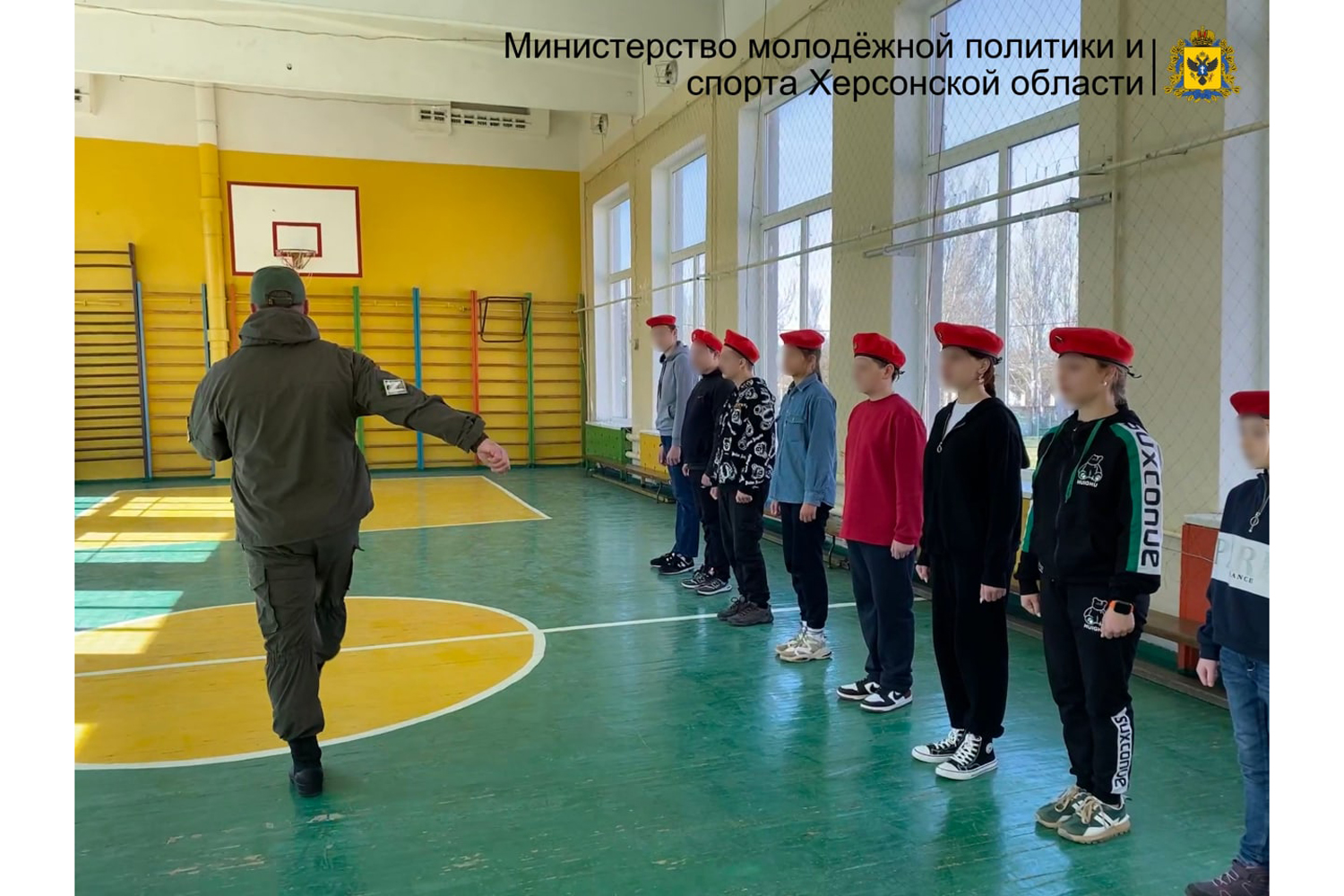
Representatives of the so-called Ministry of Youth Policy and Sports of the Kherson region organise drill classes for junior soldiers. Skadovsk, March 2023. Photo: Russian propaganda media.
Meanwhile, in addition to encouraging the study of Russia, including its history, geography, and how it operates, the YugMolodoy youth organisation also honours Russia’s “traditional values”. Of course, it also militarises children and youth. For example, along with representatives of the occupation administration, activists of the movement in the village of Chernihivka took part in the opening of a photo exhibition of the “heroes” of the so-called special operation.
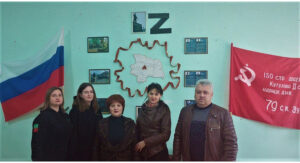
Photo exhibition of participants in the “special operation”. Chernihivka, March 2023. Photo: Russian propaganda media.
The first cadet classes in mainland Tavria and Pryazovia are also being established under the patronage of the Russian security forces.
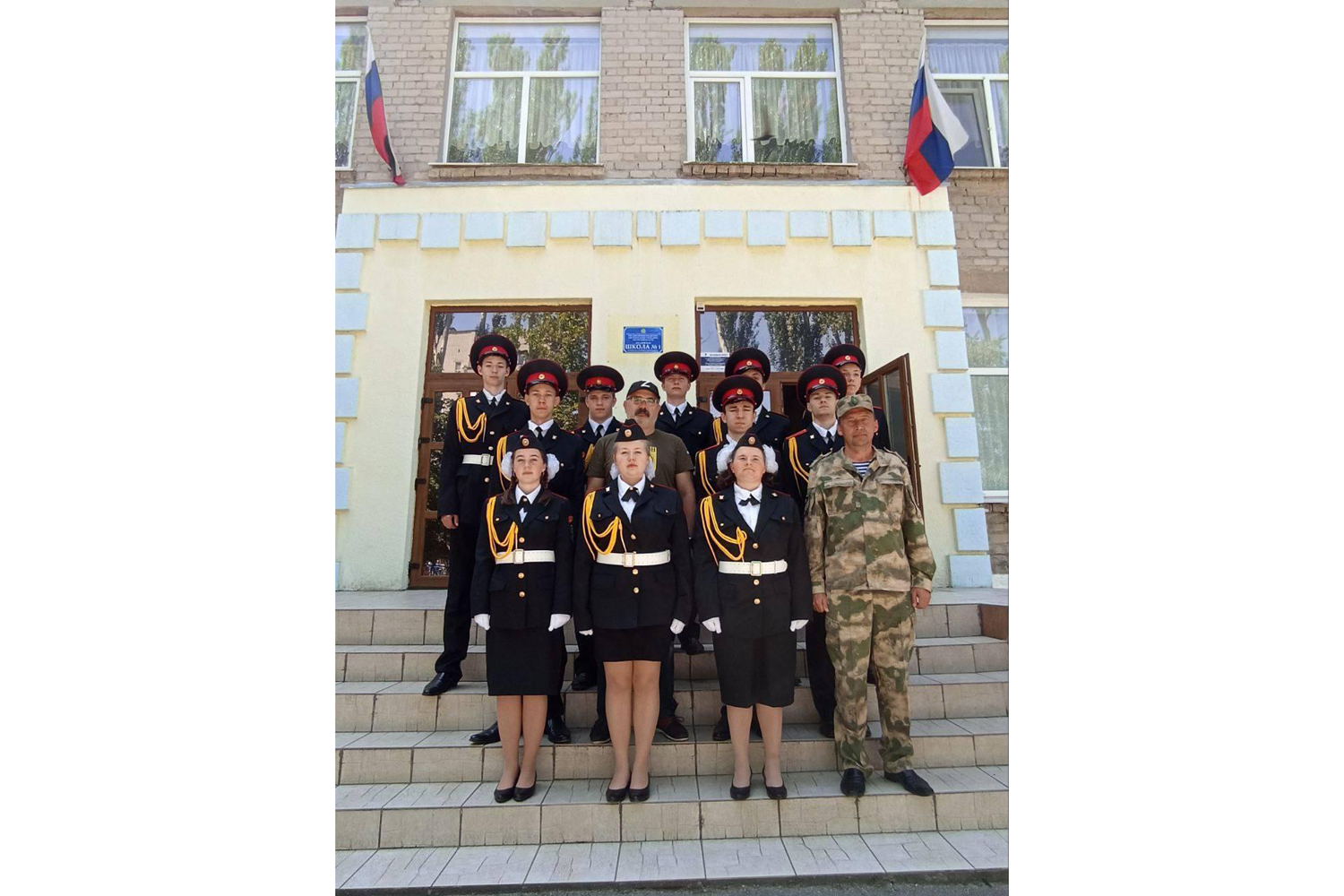
The class of the so-called Russian Investigative Committee in the Kherson region takes a photo to express gratitude for uniforms received from the Sergei Mikheev Foundation with the assistance of the “Ministry of Youth Policy and Sports”. Skadovsk, June 2023. Photo: Russian propaganda media.
If these Ukrainian territories are not liberated from the Russian invaders in the near future, militarisation measures are expected to intensify in the new school year. Military training is one of the mandatory modules in Russia’s “Fundamentals of Life Safety” educational program, and in Melitopol, for example, there are plans to open a Yunarmiya building.
It is clear that the Russian Federation is deliberately and systematically doing everything it can to destroy Ukrainian identity among residents of the occupied territories. Indoctrination and militarisation are just tools to achieve this goal. Many Ukrainian citizens have essentially become hostages of the Russian occupation authorities, and they must accept the occupiers’ criminal actions in order to stay alive. This is why Ukraine will face a number of challenges in reintegrating its citizens, at both the state and public levels, after the de-occupation of the peninsula. Ukraine will need to establish joint efforts with villages and communities to overcome the consequences of years of poisonous Russian propaganda and return its citizens to their native contexts.
Ukrainian children are victims of Russian crimes
Unfortunately, the exact number of Ukrainian children who have been taken hostage by the Russian authorities is unknown. The so-called Minister of Education, Science and Youth of the Republic of Crimea published data indicating that almost 230,000 schoolchildren remained on the peninsula as of 1 September 2023. And according to Ukraine’s Ministry of Reintegration, as of 1 September 2022, 100,000-120,000 children are living in other temporarily occupied territories. Deprived of access to the Ukrainian language and education, in a situation where the only way to get at least some education is to attend a Russified school, Ukrainian children are victims of Russia’s crimes against Ukraine.
“Cognitive de-occupation is about working with people’s minds,” explained Tamila Tasheva, representative of the President of Ukraine in the Autonomous Republic of Crimea, at a discussion on de-occupation and the challenges associated with it. “We understand that the physical de-occupation will take place primarily thanks to our Security and Defense Forces, thanks to political and diplomatic efforts. And by the time of this kinetic, physical de-occupation, we need to develop all the plans related to reintegration processes. What is happening now in Crimea and other occupied regions? Russians are planting mines in people’s minds with their propaganda, intensified information policy, and militarisation. Therefore, cognitive de-occupation essentially means demining the minds of our citizens from the temporarily occupied territories.”
The long-term occupation of Crimea demonstrates that Russia’s strategy of appropriating and re-educating Ukrainian children will result in numerous challenges after the de-occupation of the peninsula and other southeastern territories. For years, children in Crimea have been taught to see Ukraine as an enemy state they must defend themselves against with arms. This is why it is important to act now — to develop real and effective strategies for the reintegration of children and youth, to resolve possible conflicts, and most importantly, to overcome the consequences of Russia’s destructive policies aimed at destroying Ukrainian identity. It is crucial not to succumb to the Russian propaganda narratives that these children are a “lost generation” for Ukraine. If we do, we could lose these children right then and there: when we fence ourselves off from them, socially stigmatise them, or ignore not just their needs but their very existence. This is what Russia is hoping for. We, as the democratic world, have no right to lose this battle.

